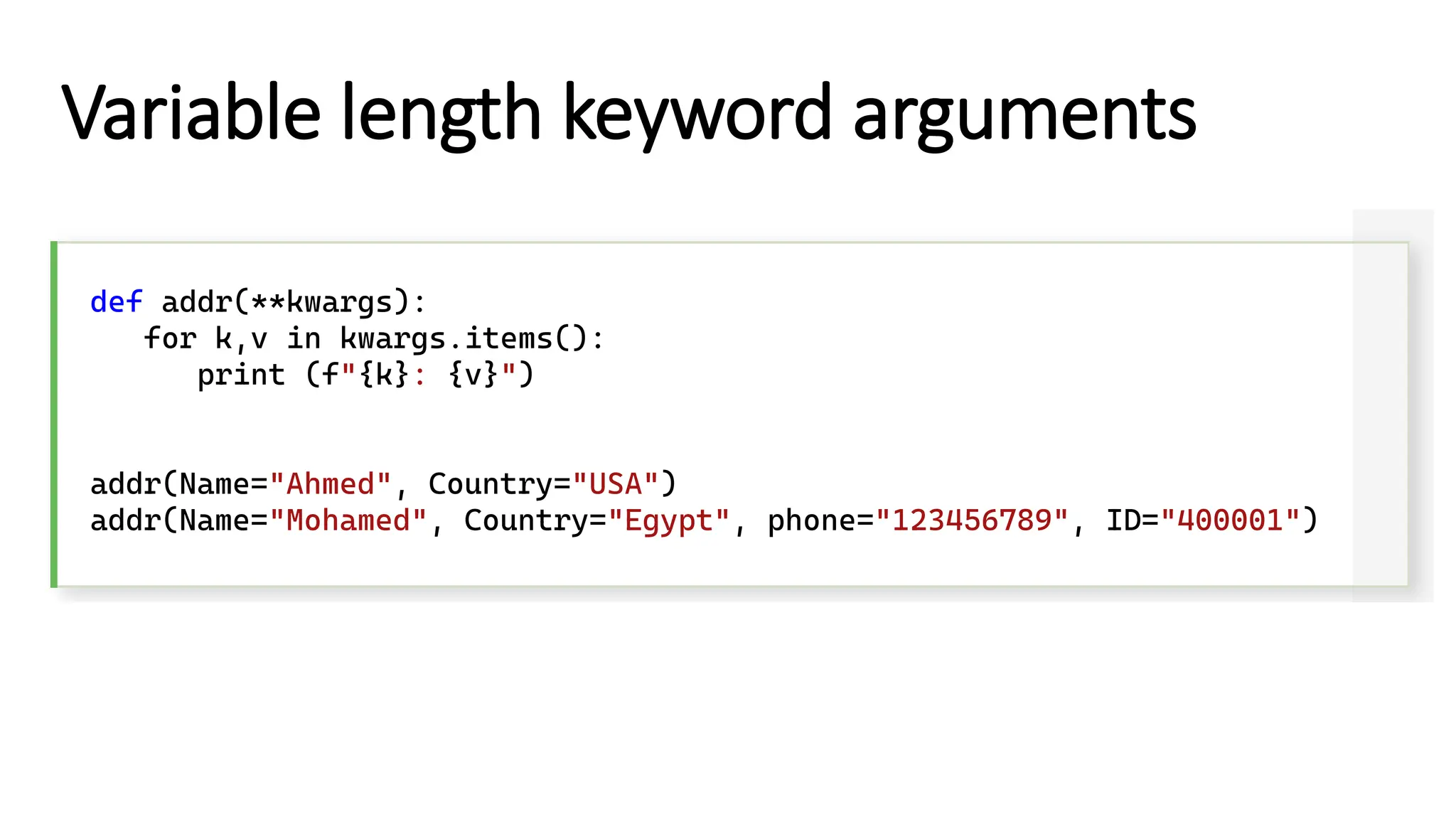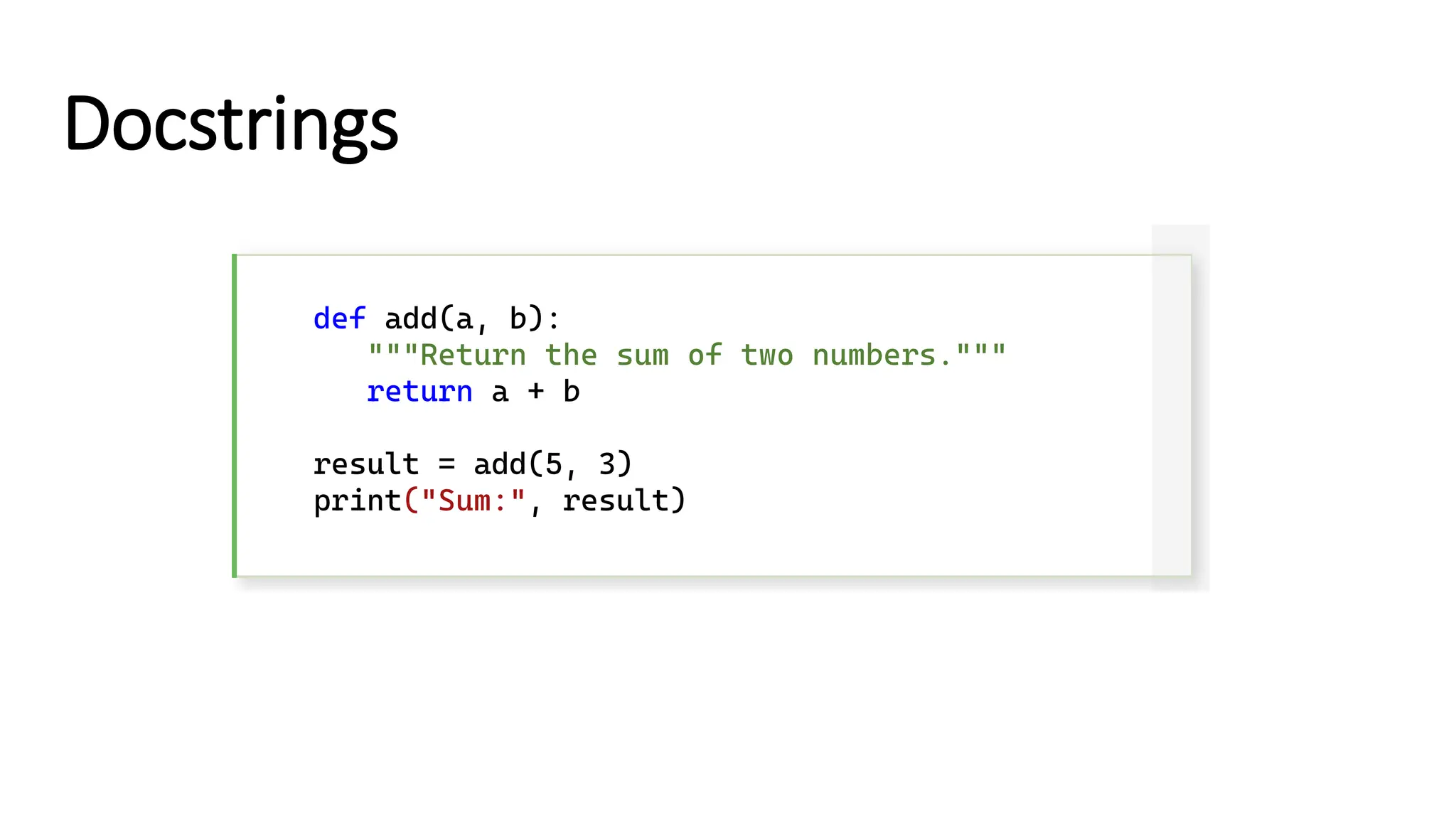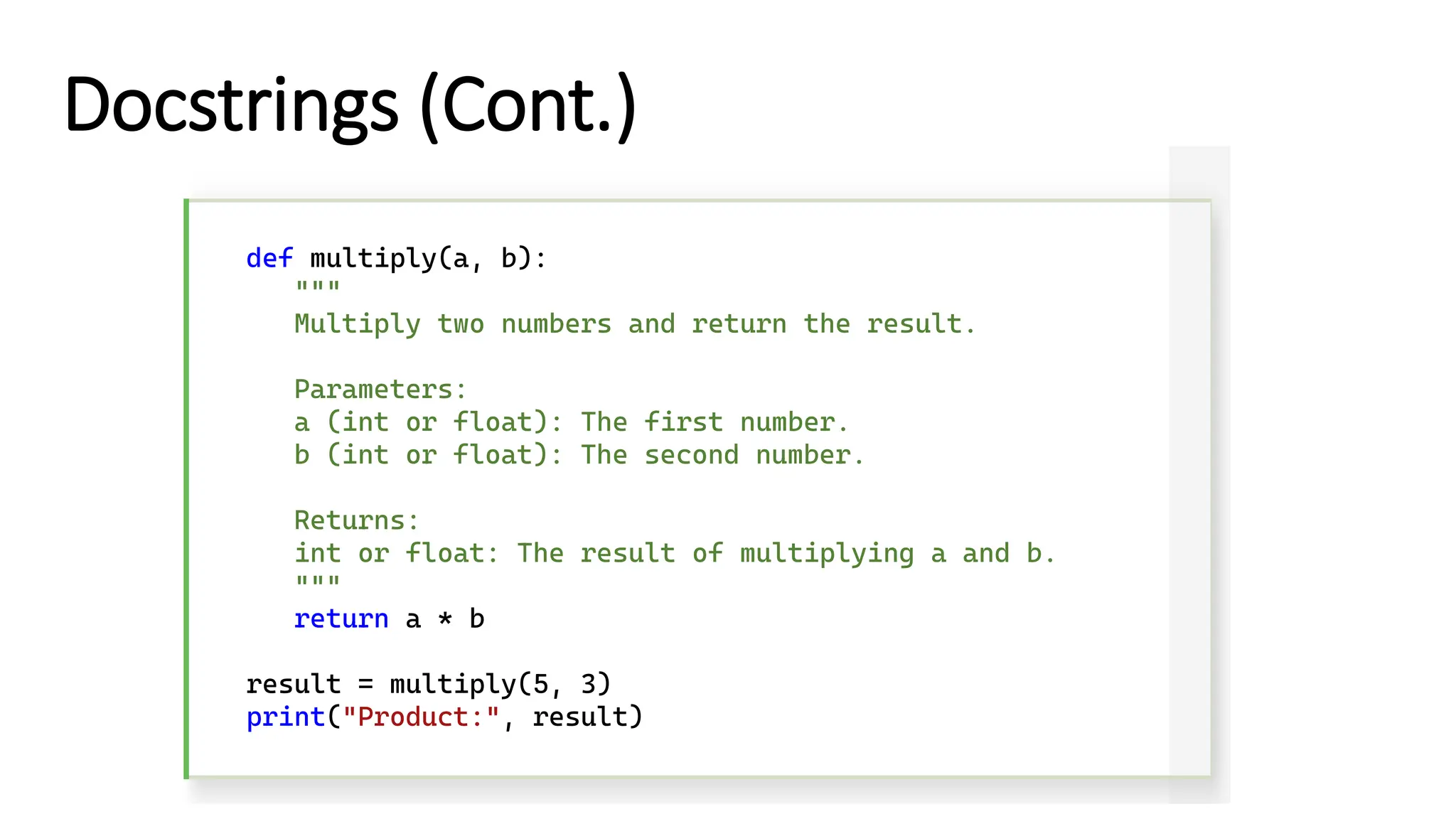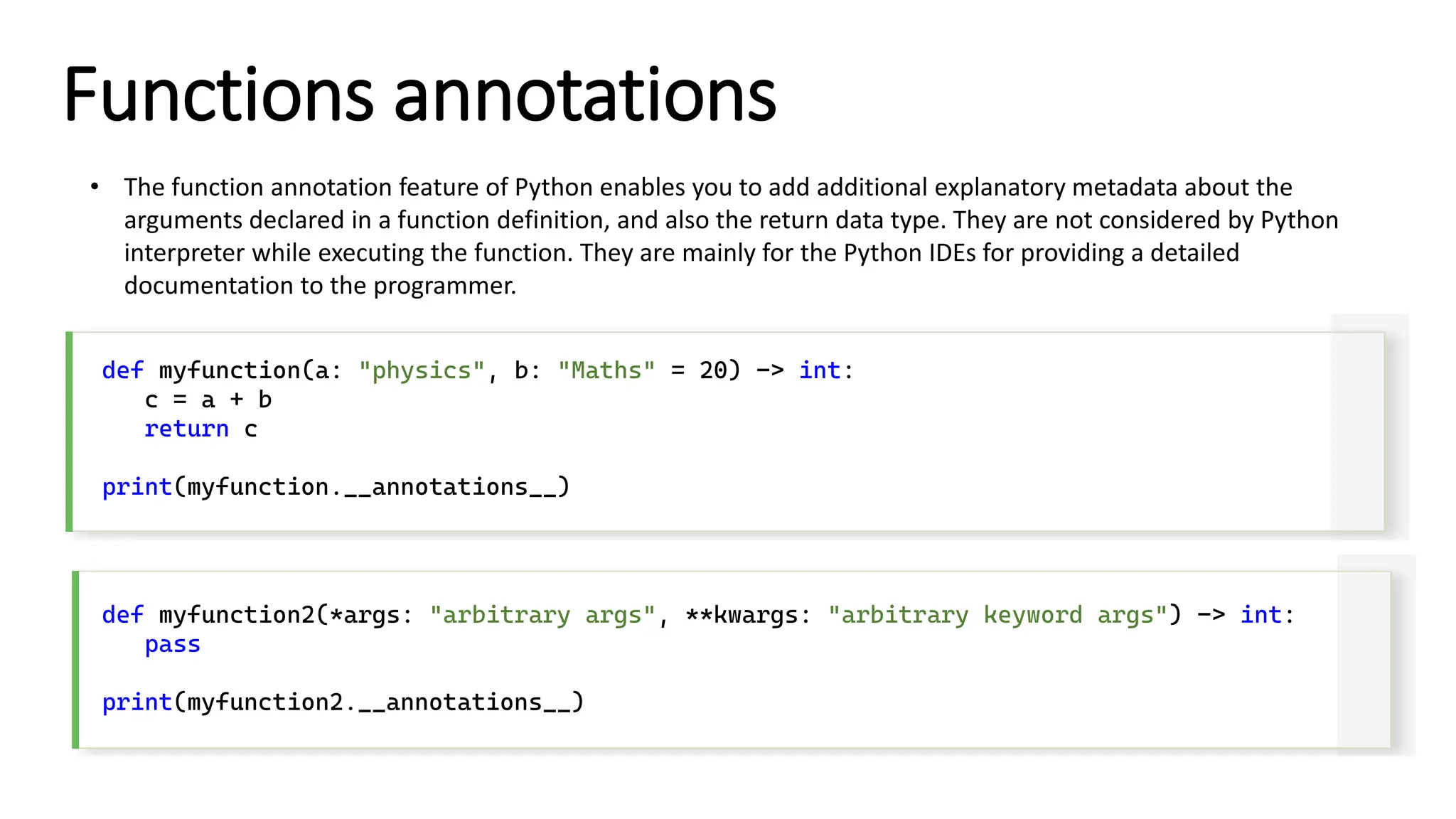The document is an introductory lecture on Python programming focusing on loops, including 'for' and 'while' loops, and their applications through examples. It also covers function creation, variable scope, and key concepts such as break and continue statements. Additionally, the document discusses function annotations, positional and keyword arguments, and demonstrates how to define and call functions.
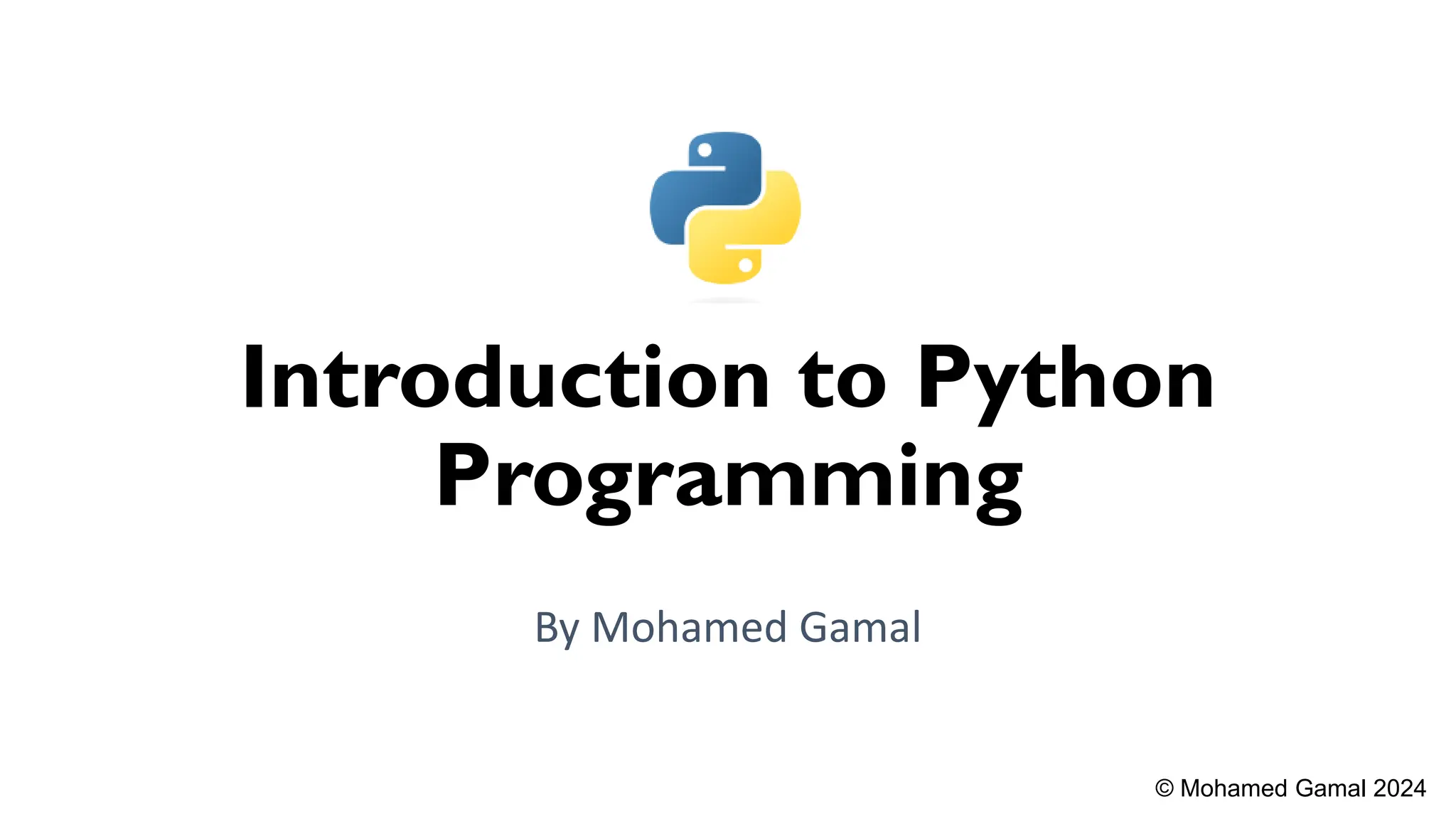
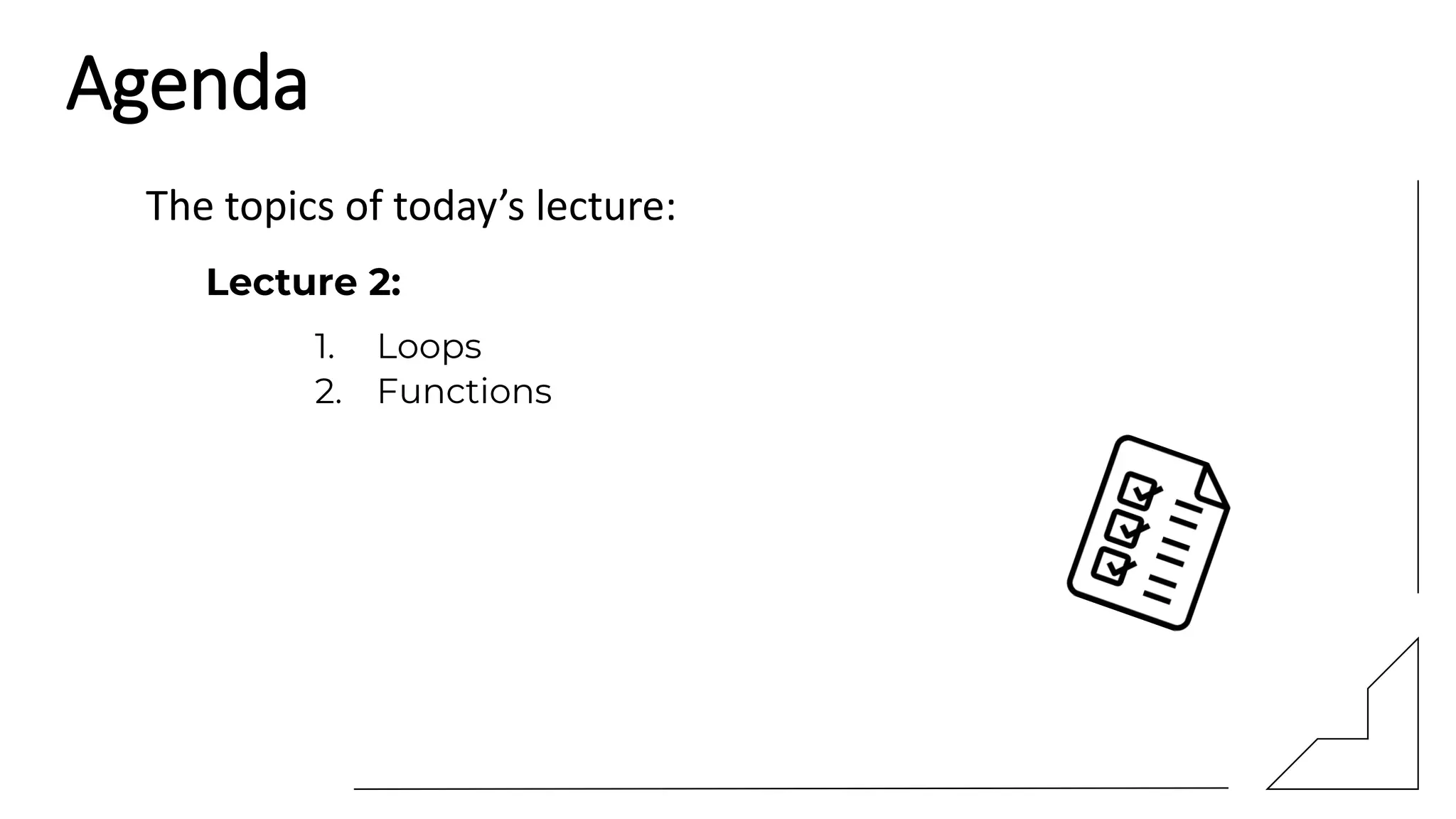

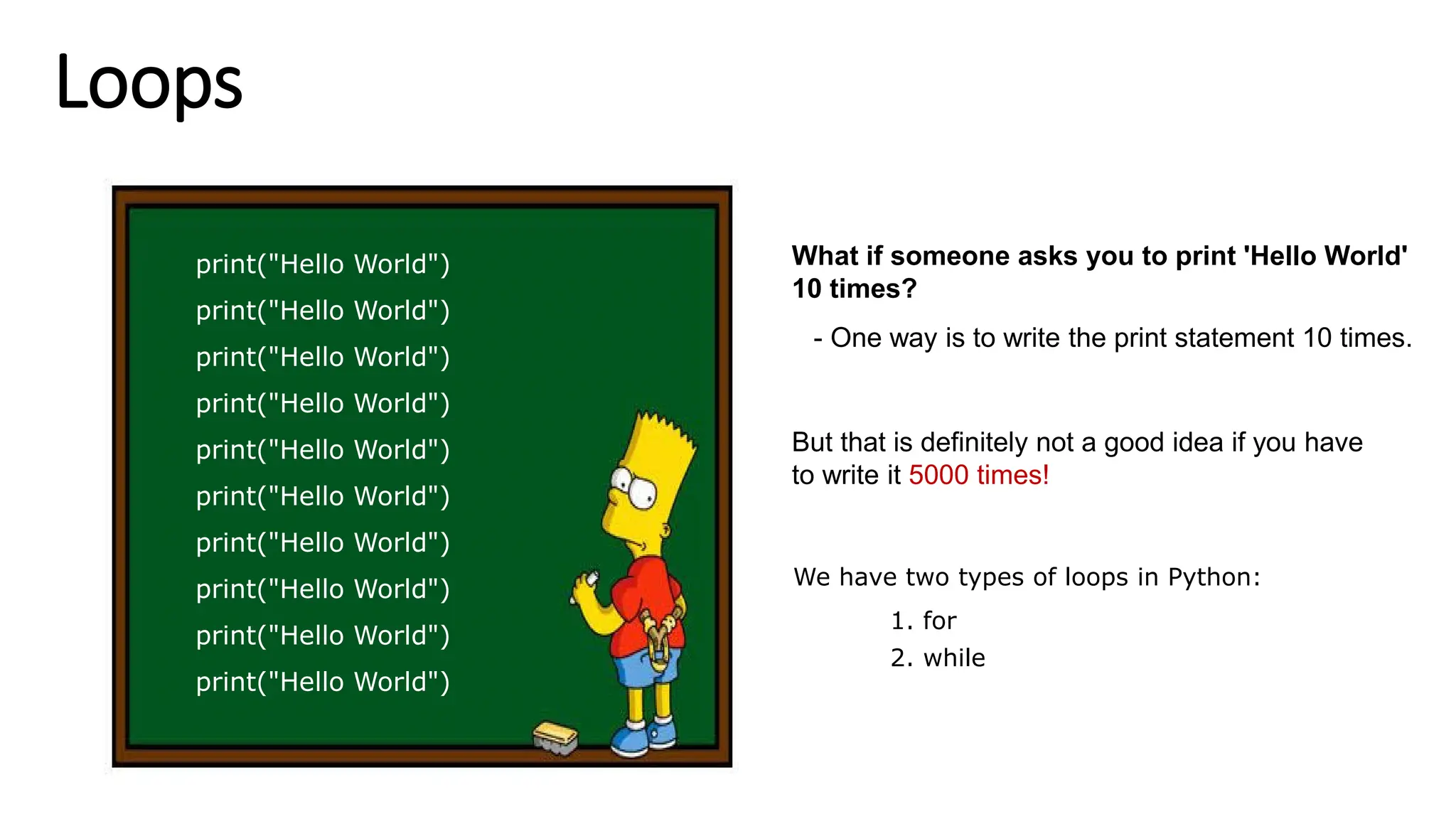
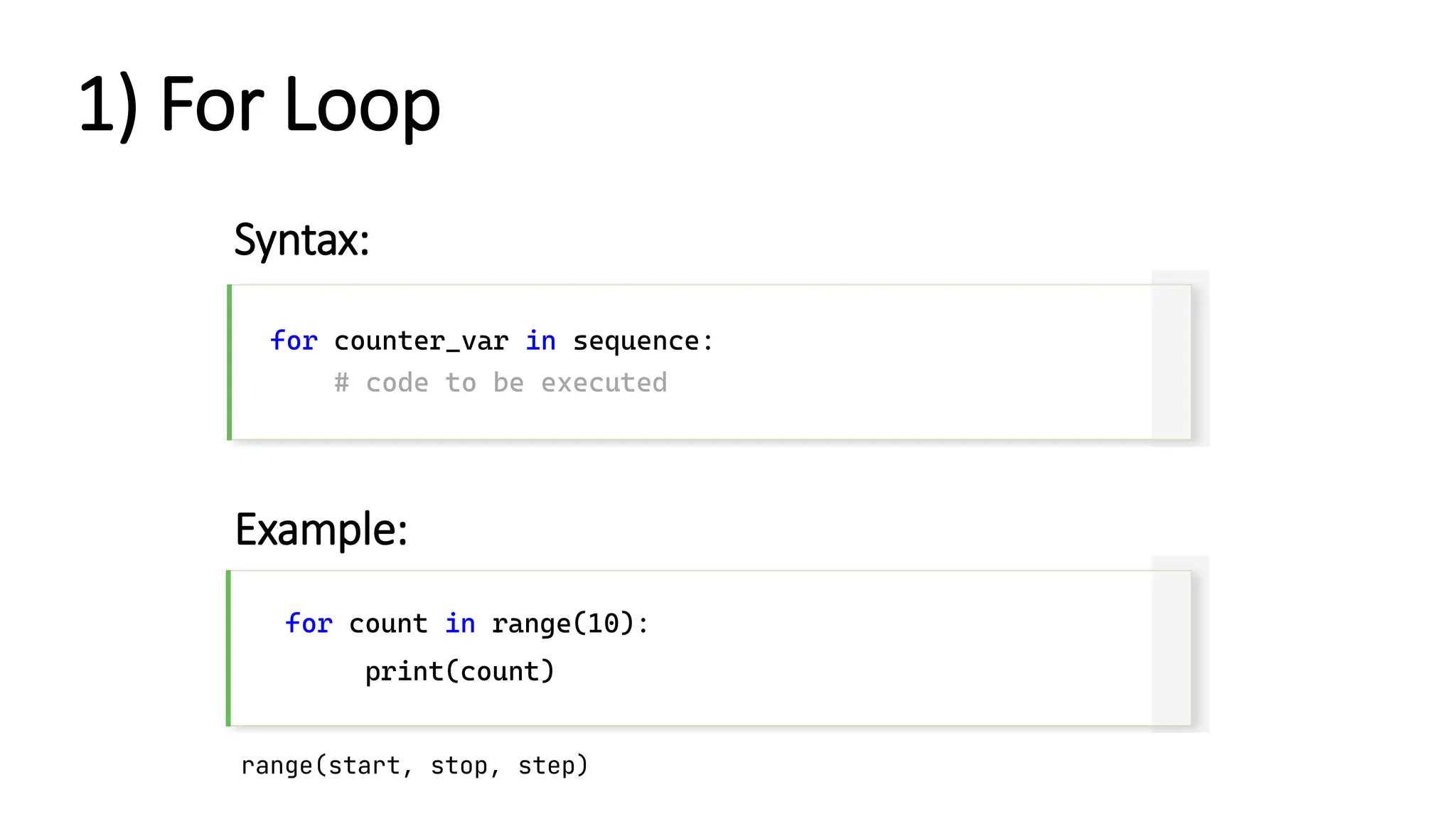
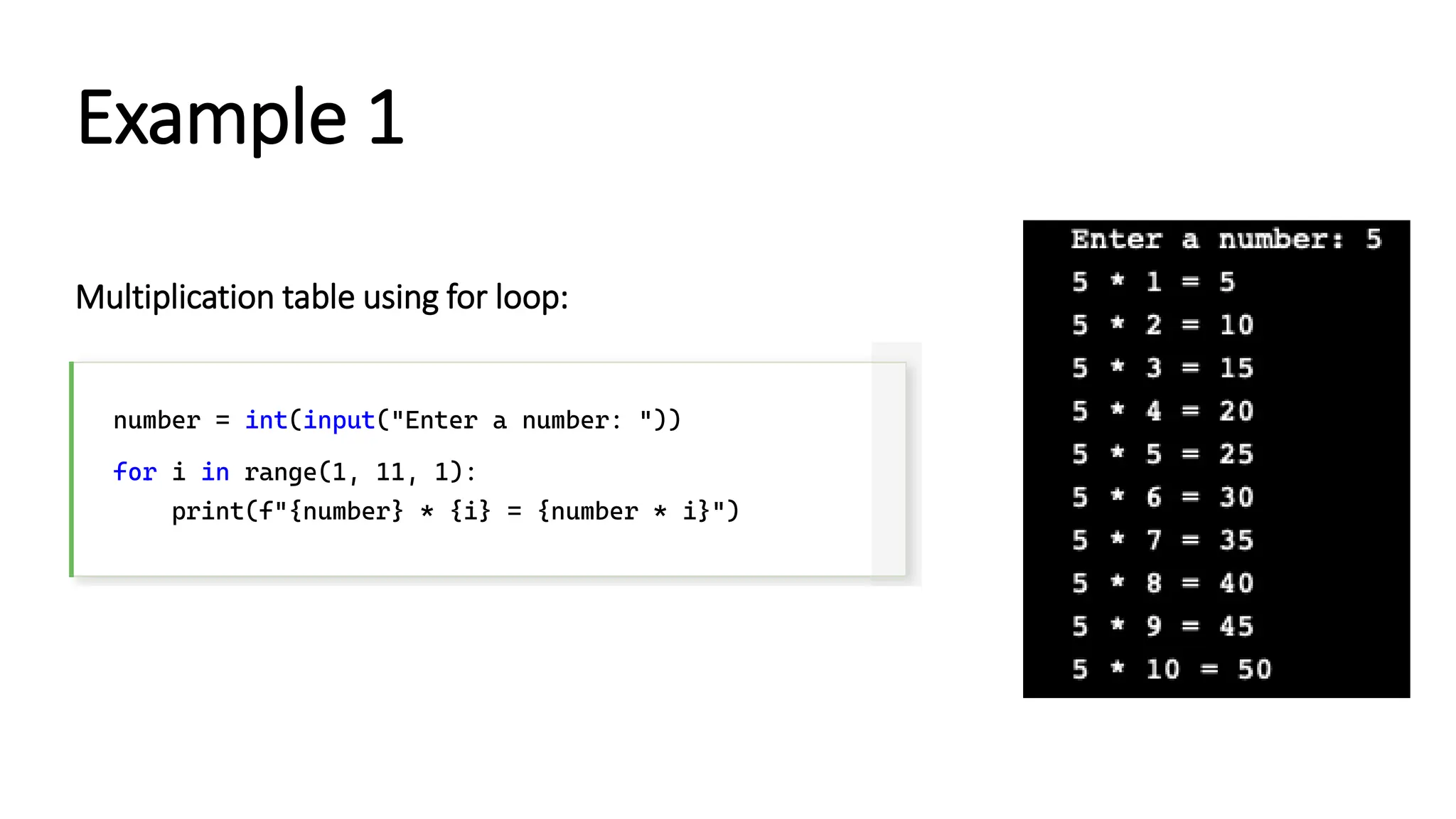
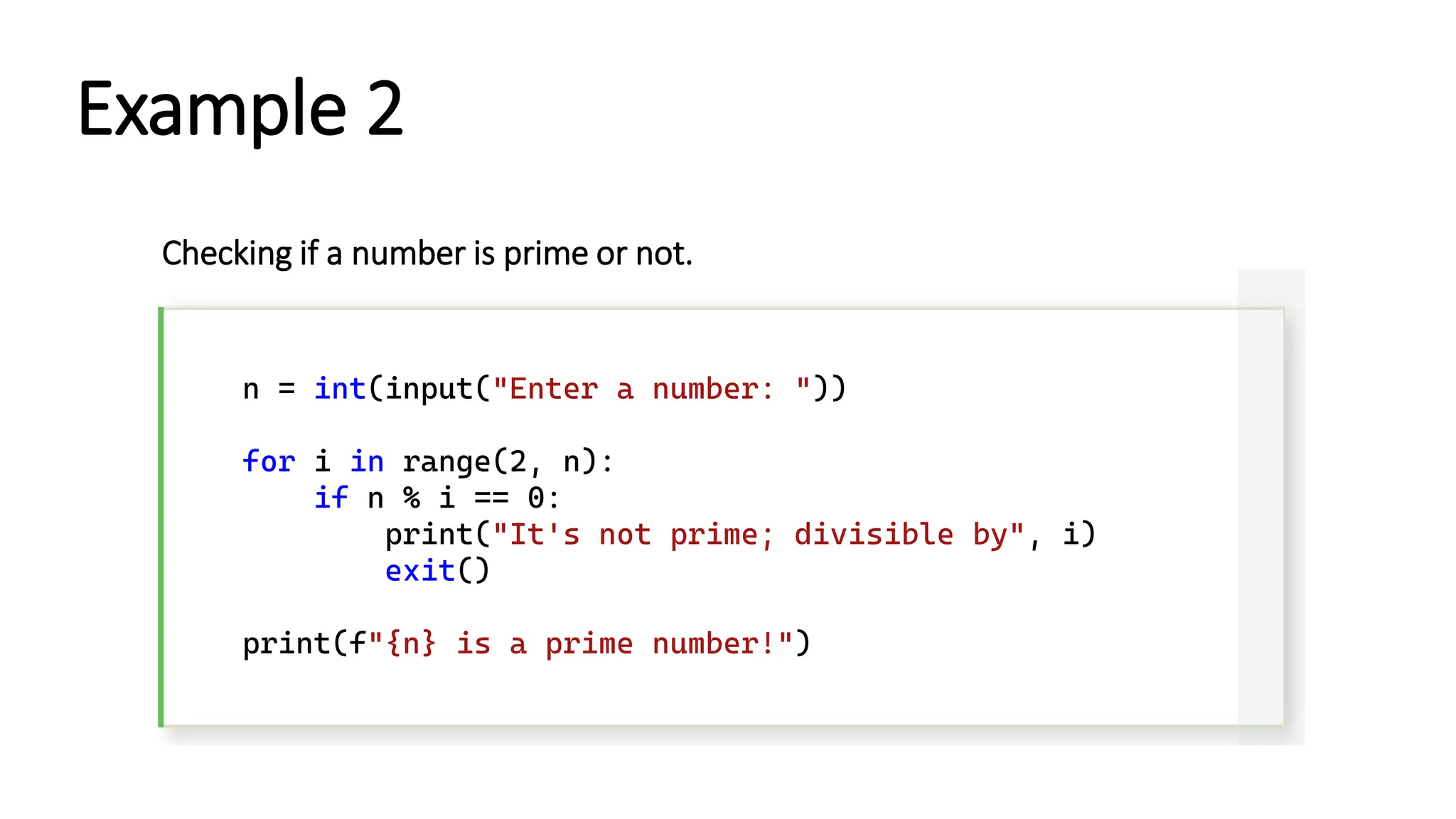
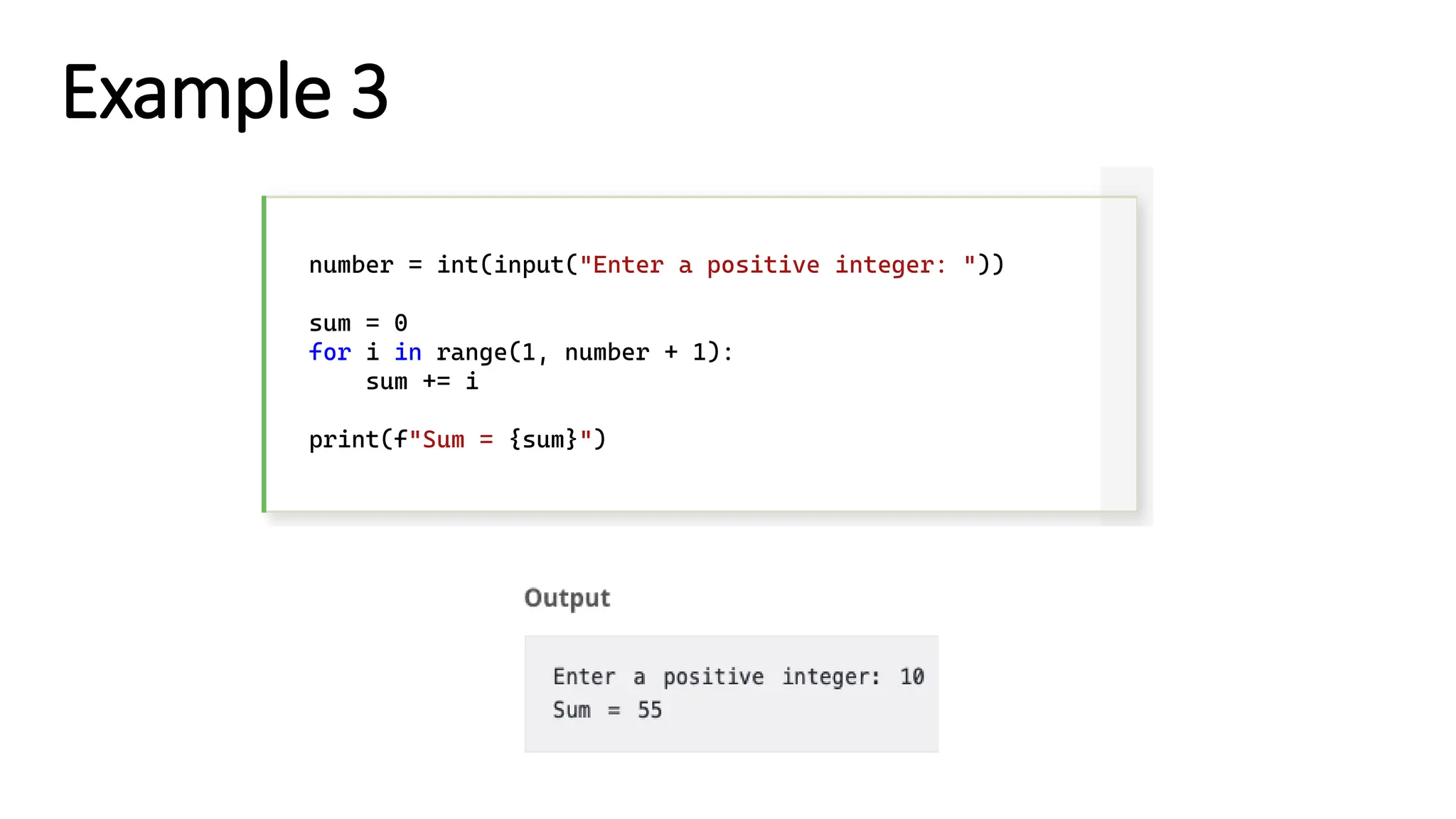
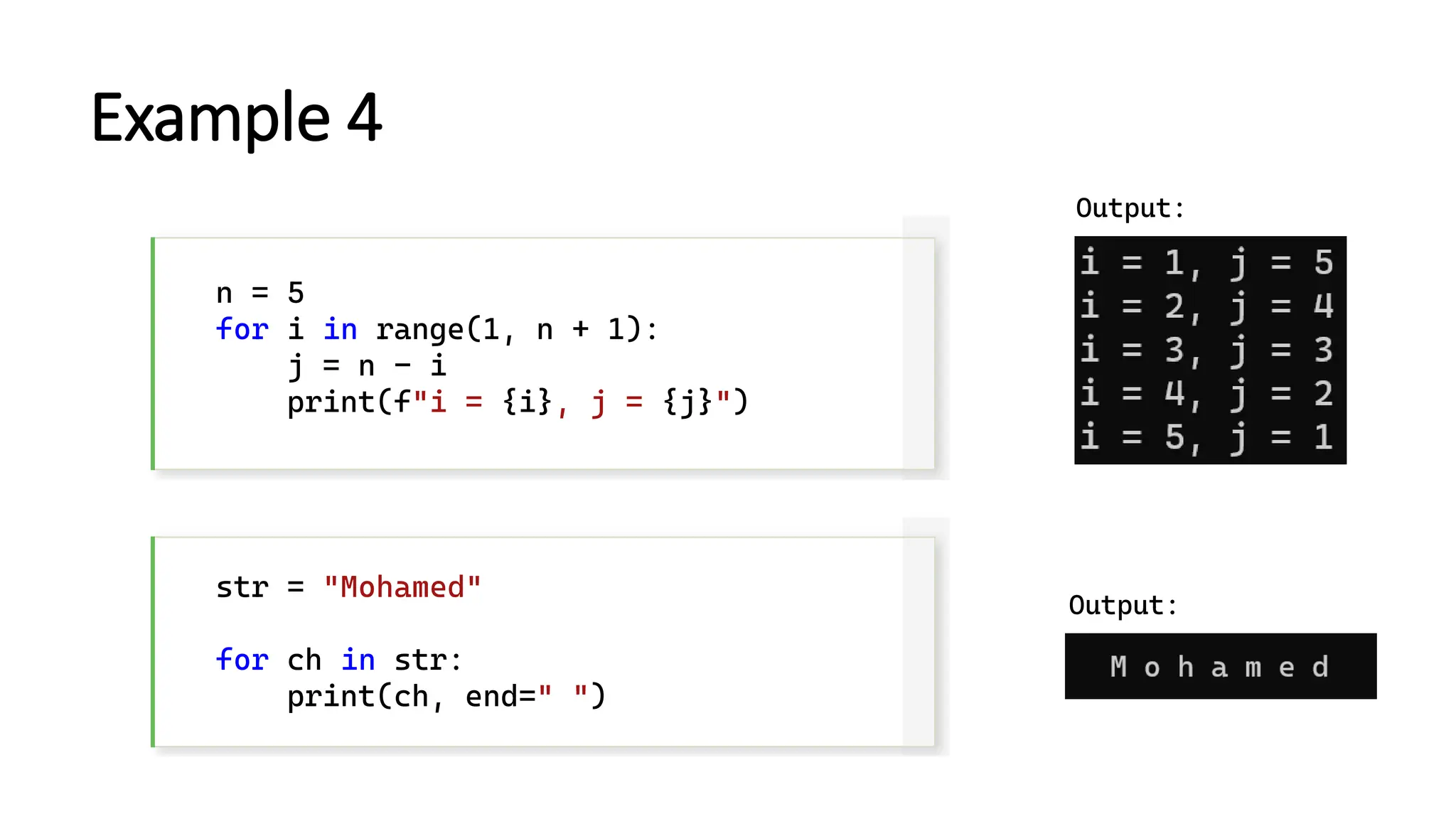
![Example 5 names = [ "Mohamed", "Ahmed", "Omar", "Mona", "Aya" ] for name in names: print(name) names = [ "Mohamed", "Ahmed", "Omar", "Mona", "Aya" ] for (i, name) in enumerate(names): print(f"Person {i}: {name}")](https://image.slidesharecdn.com/introductiontopython-lecture2-240909223643-1a6e12b6/75/Introduction-to-Python-Prog-Lecture-2-10-2048.jpg)
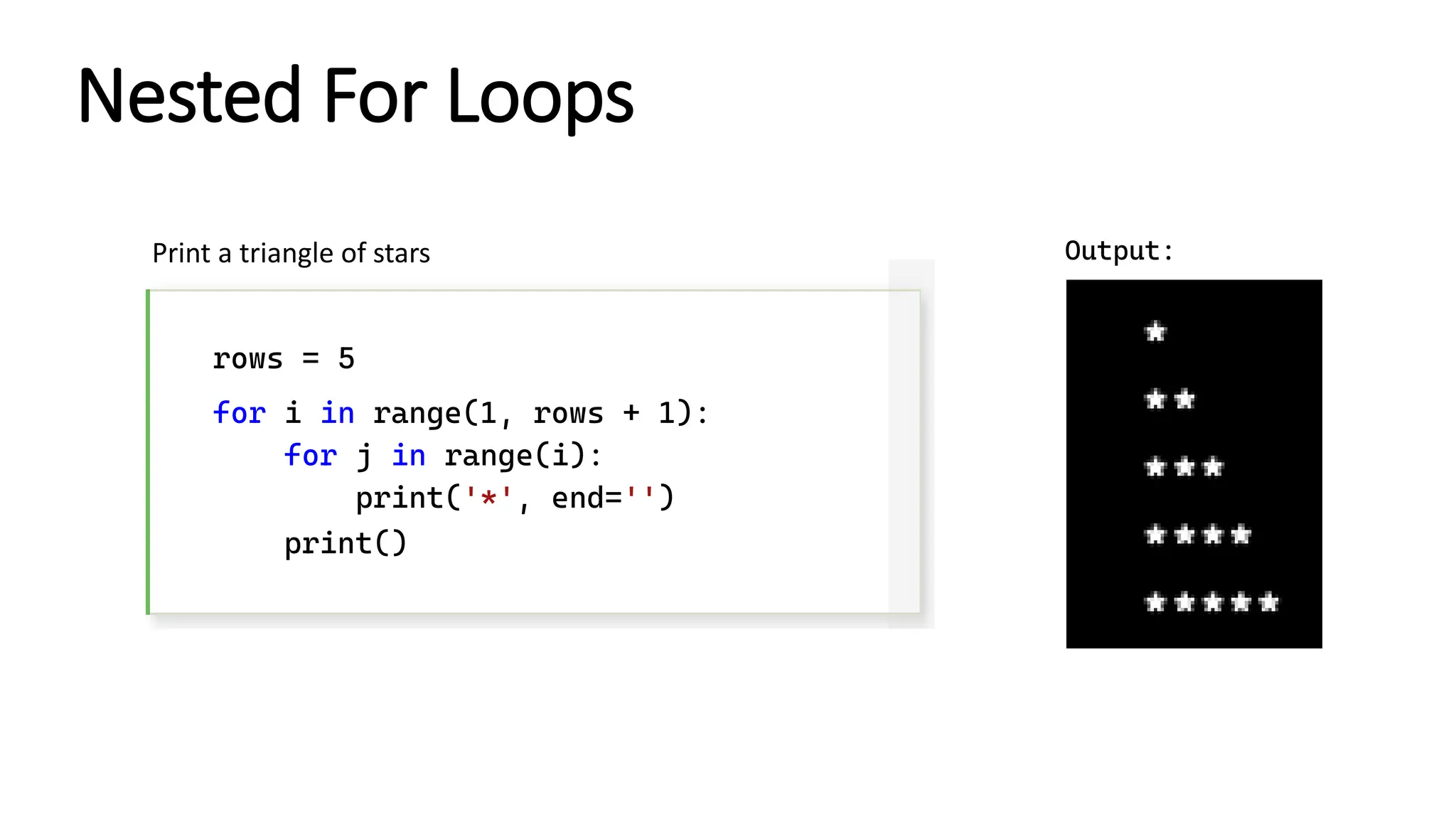
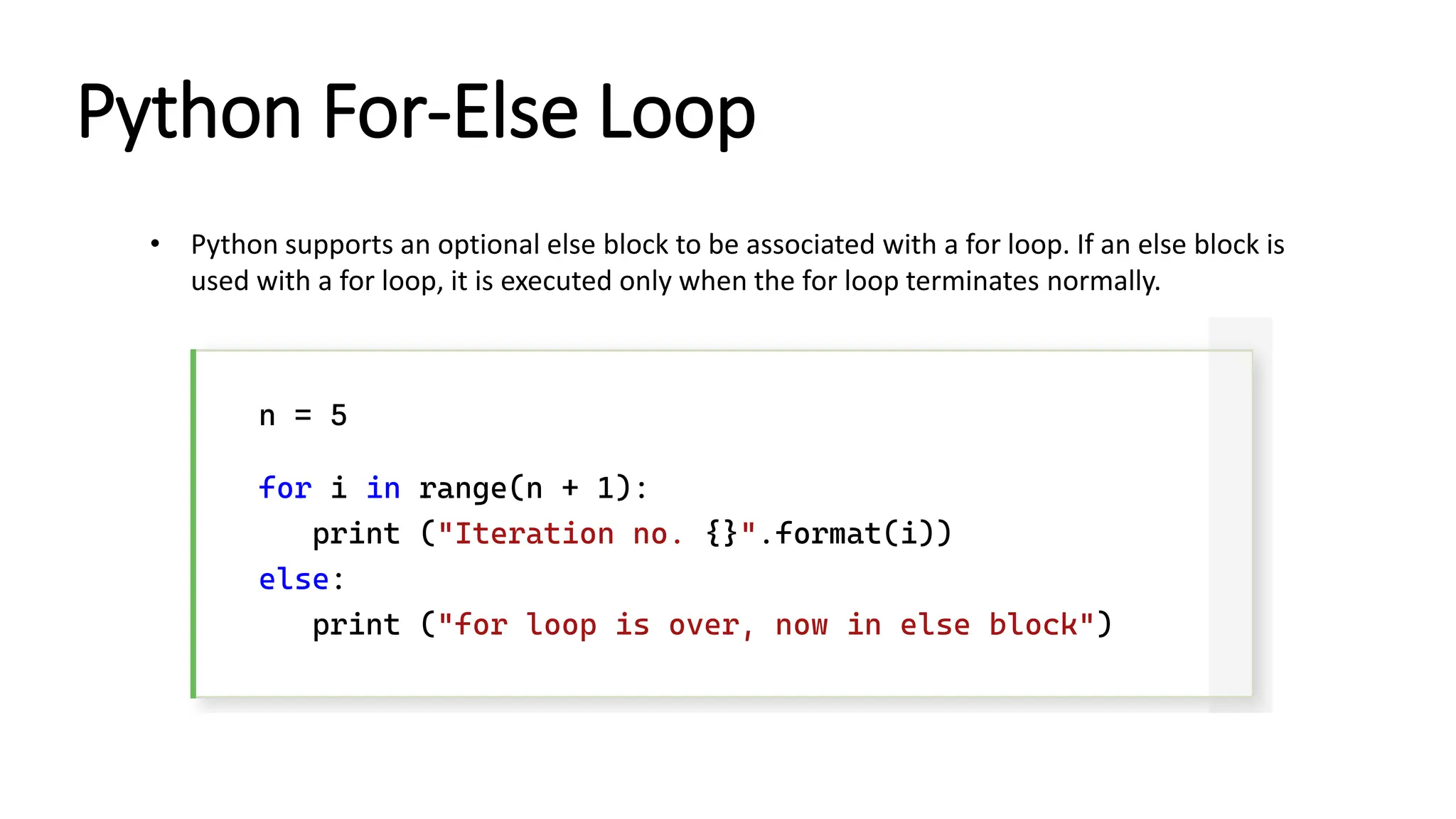
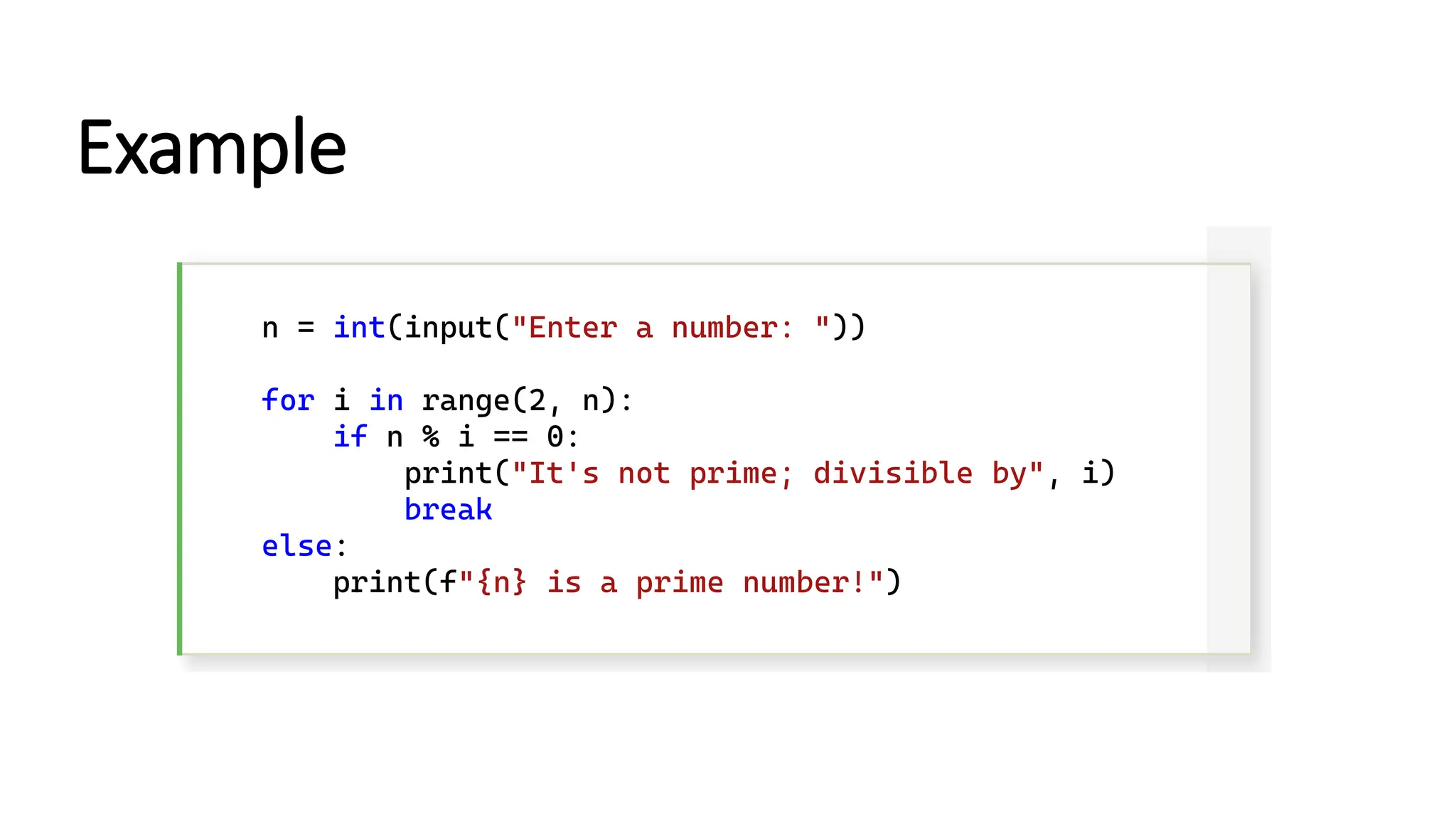
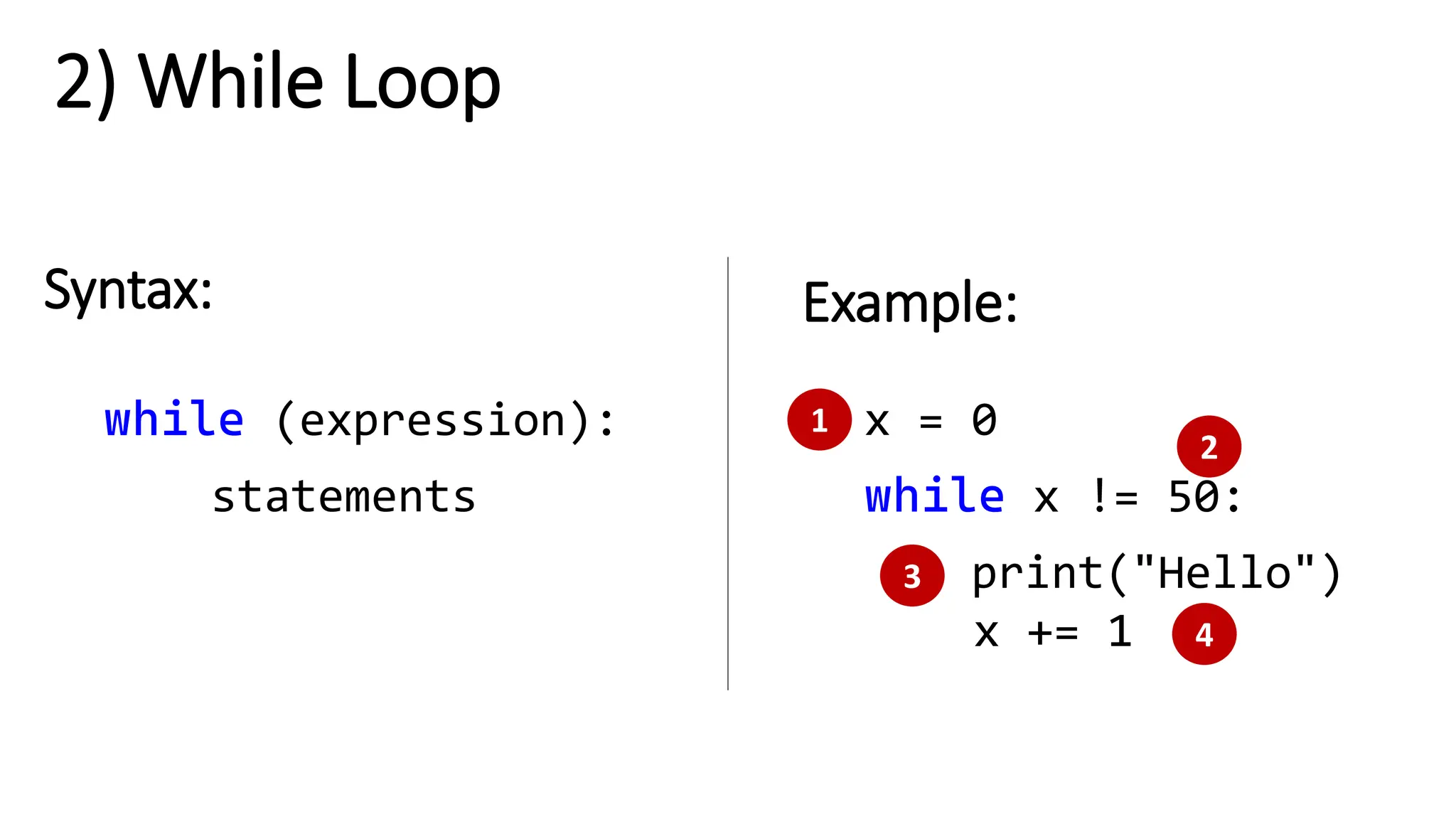
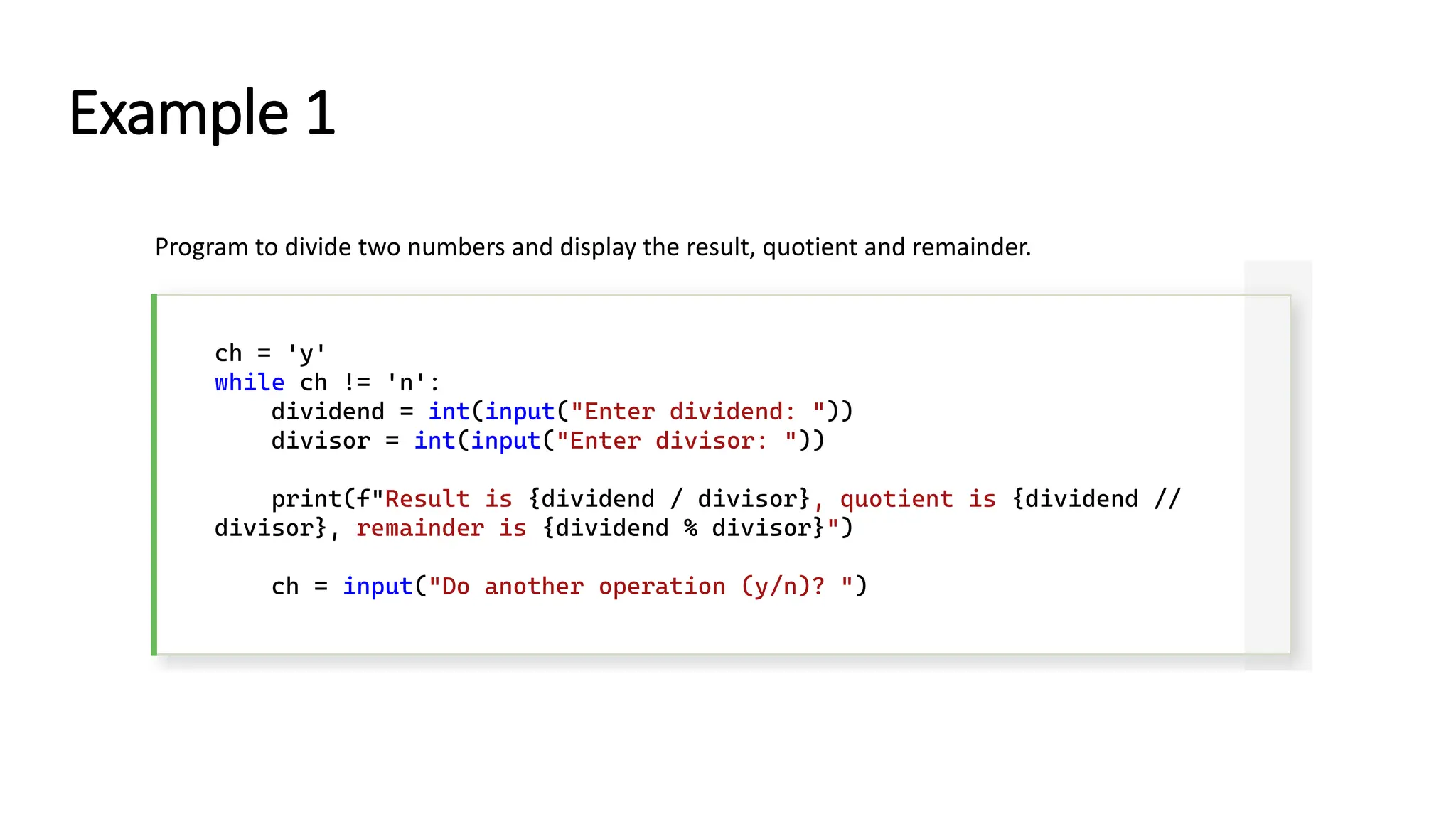
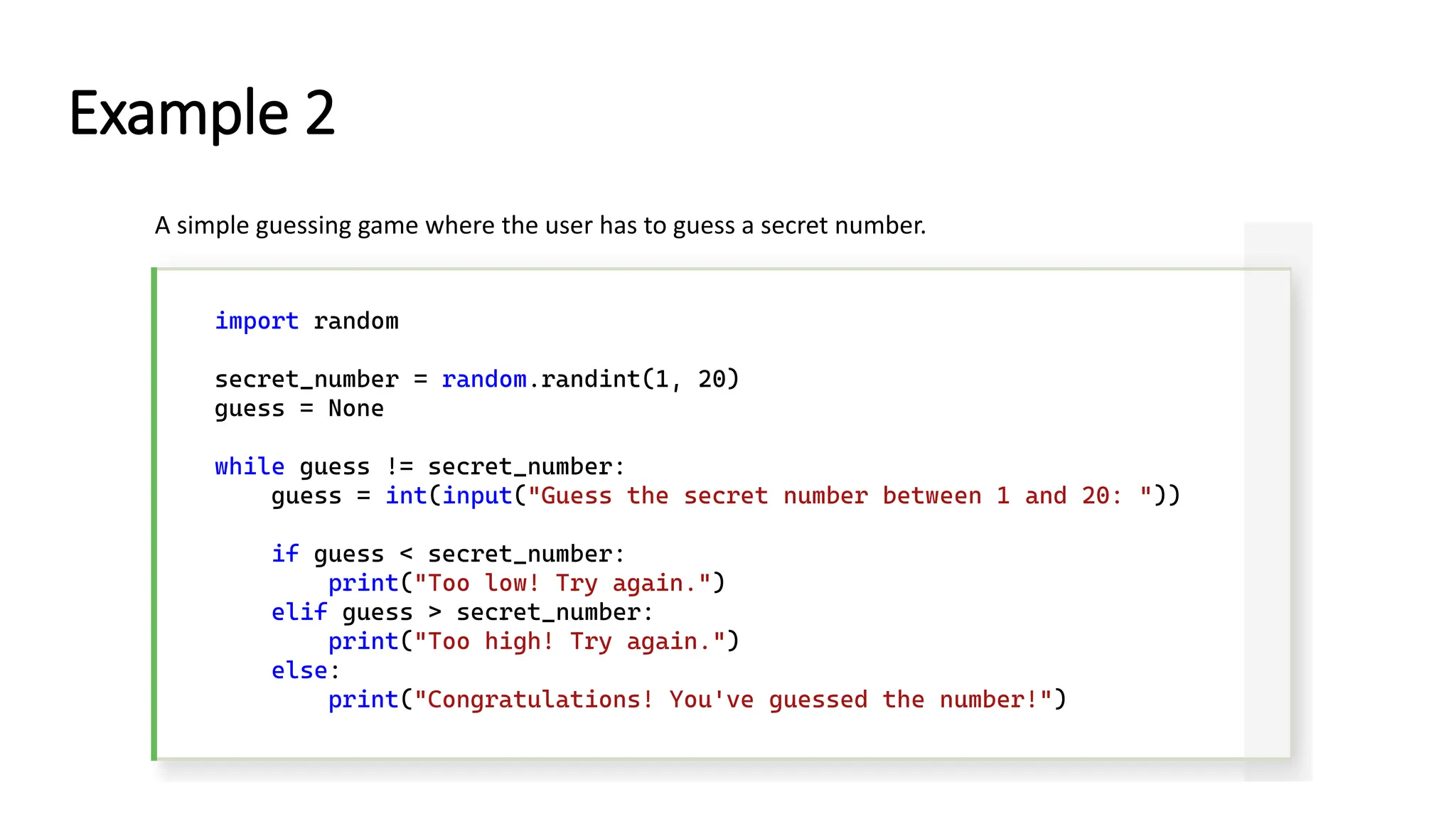
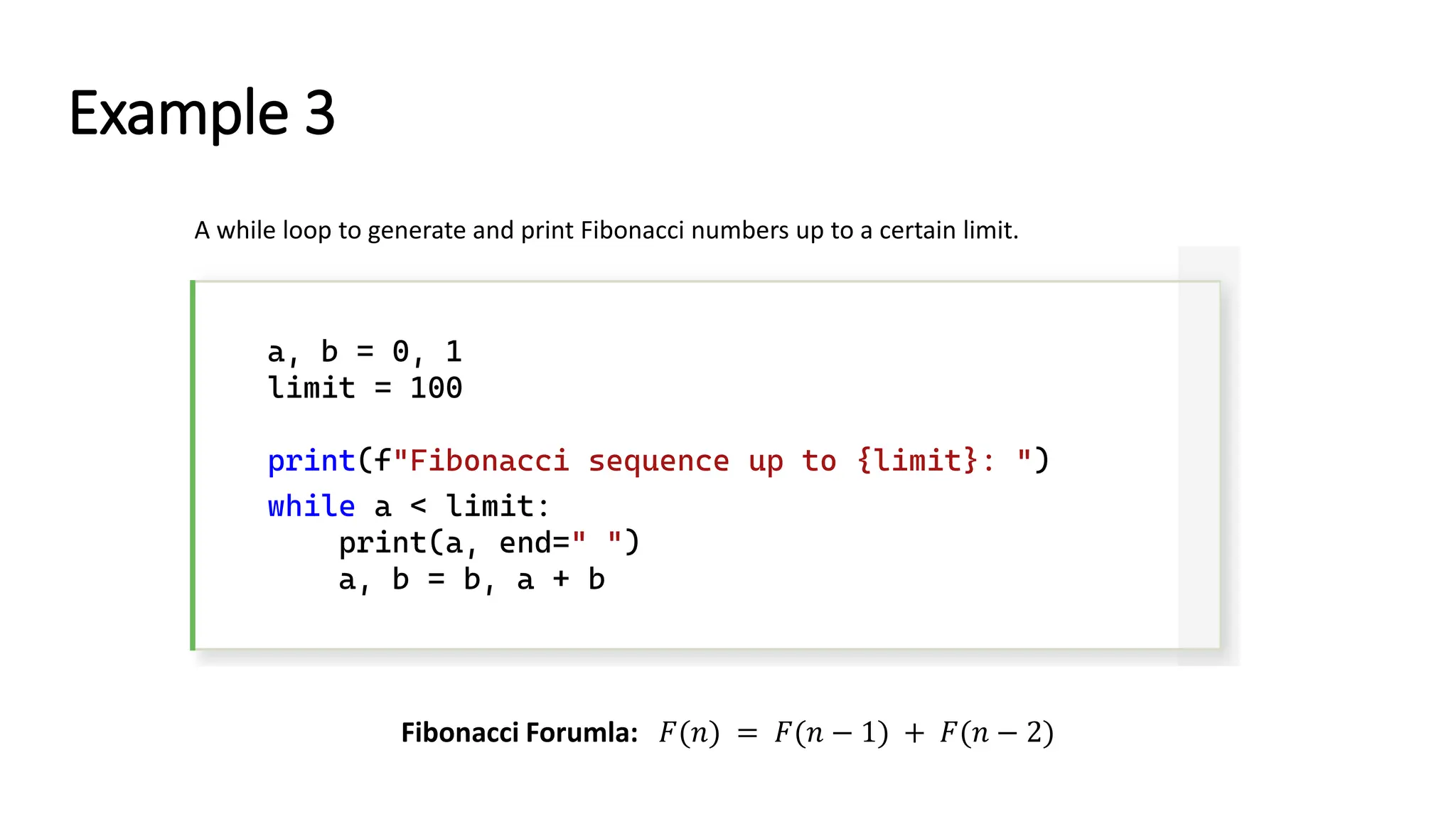
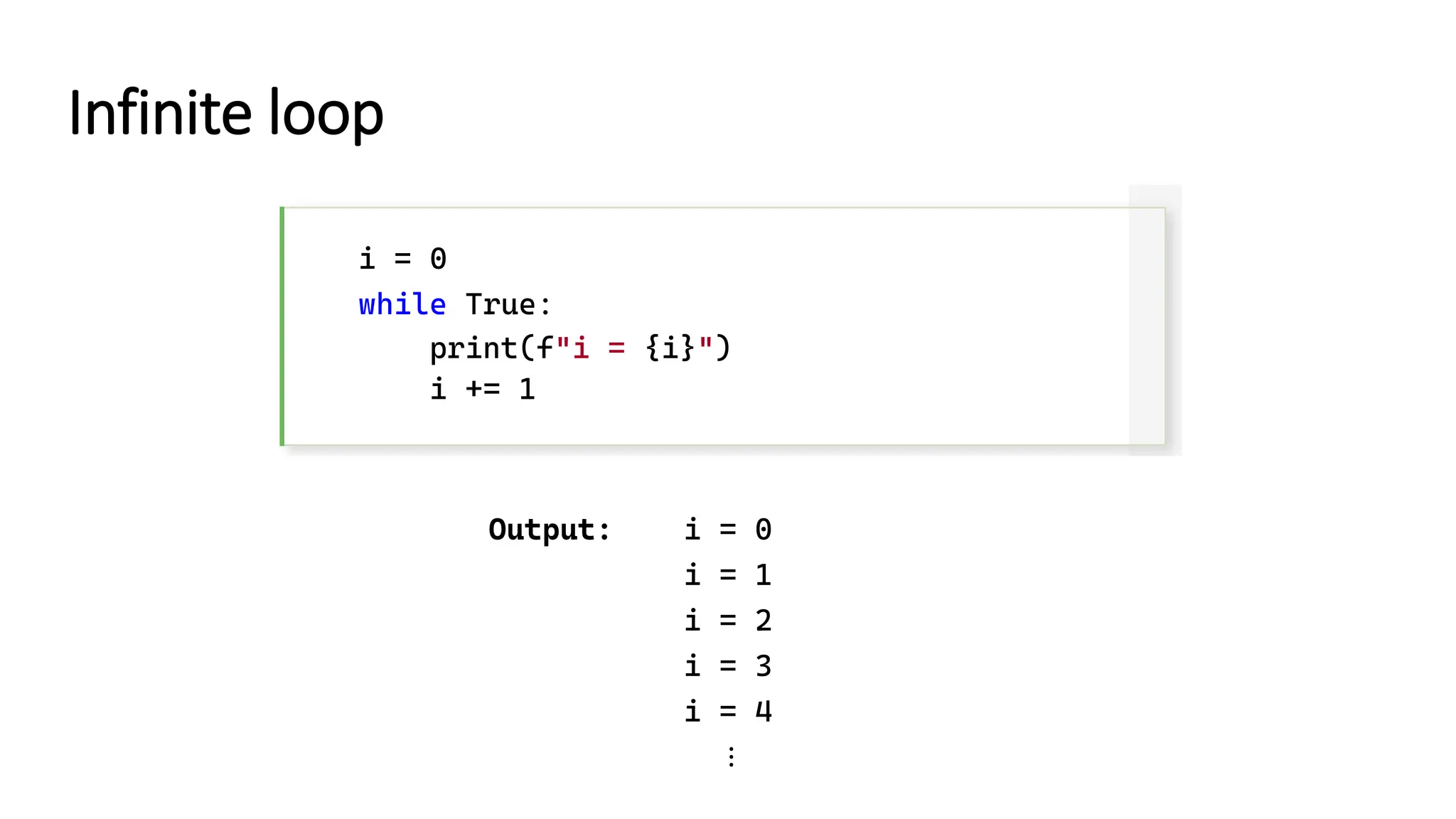
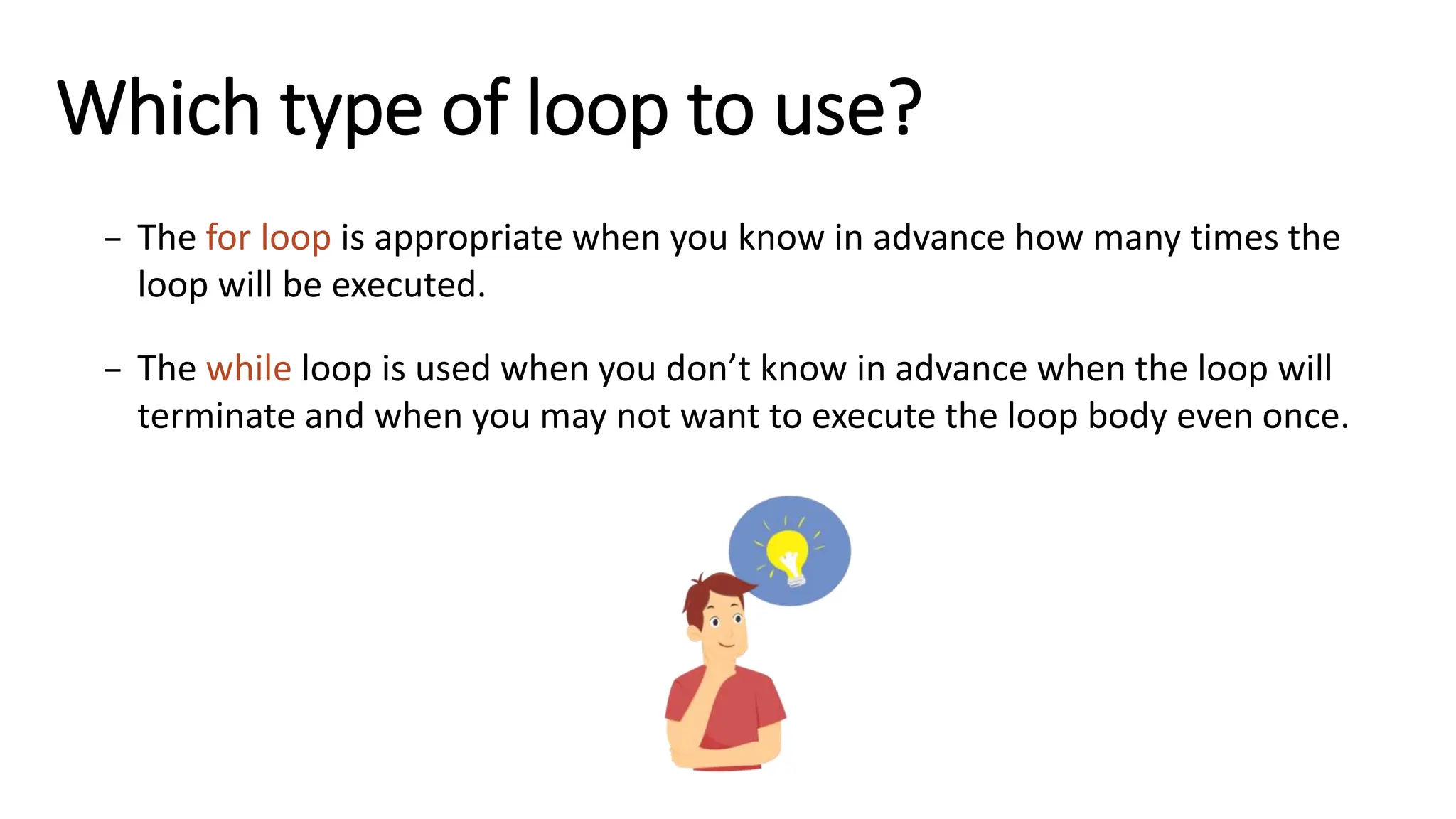
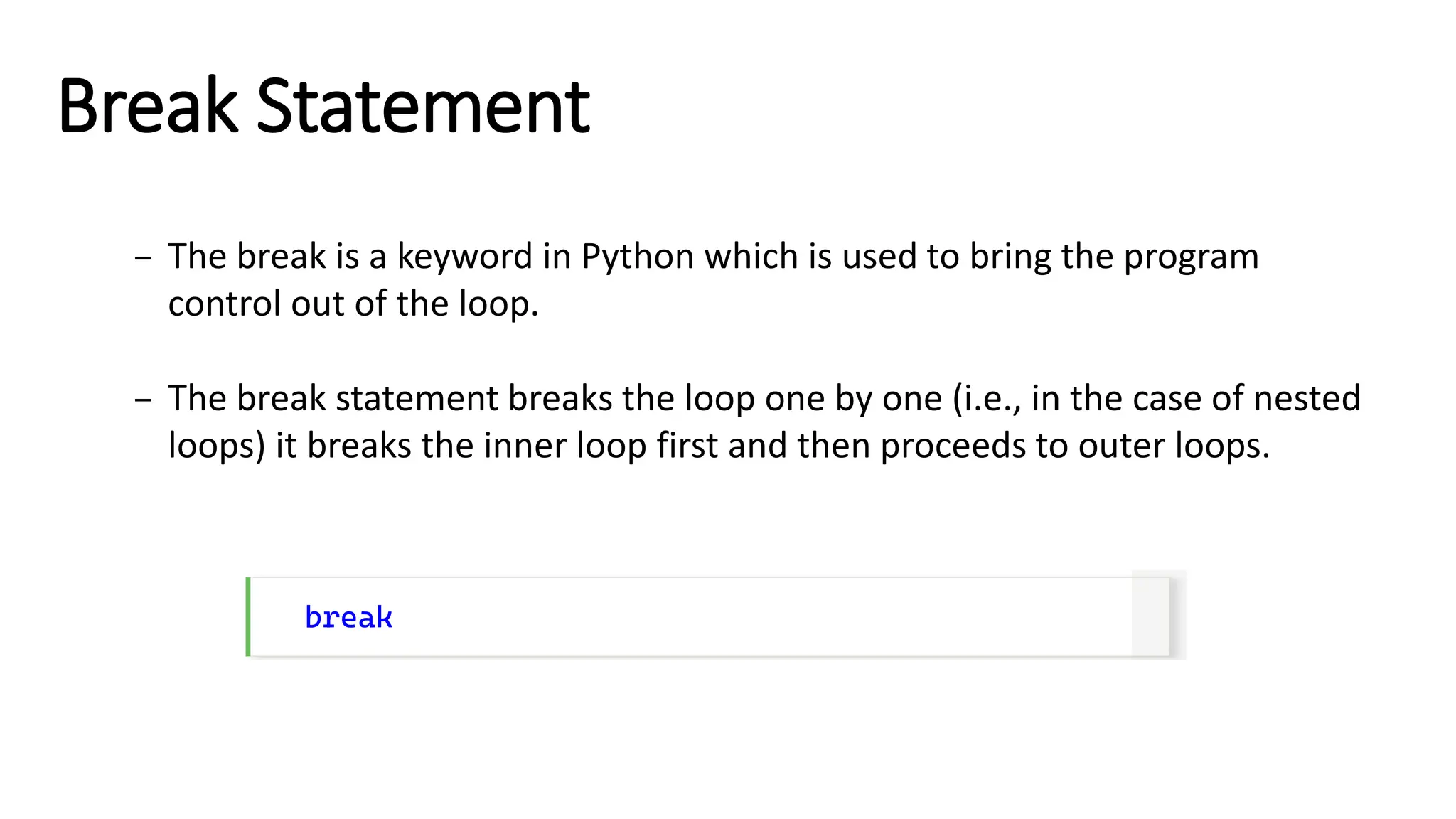
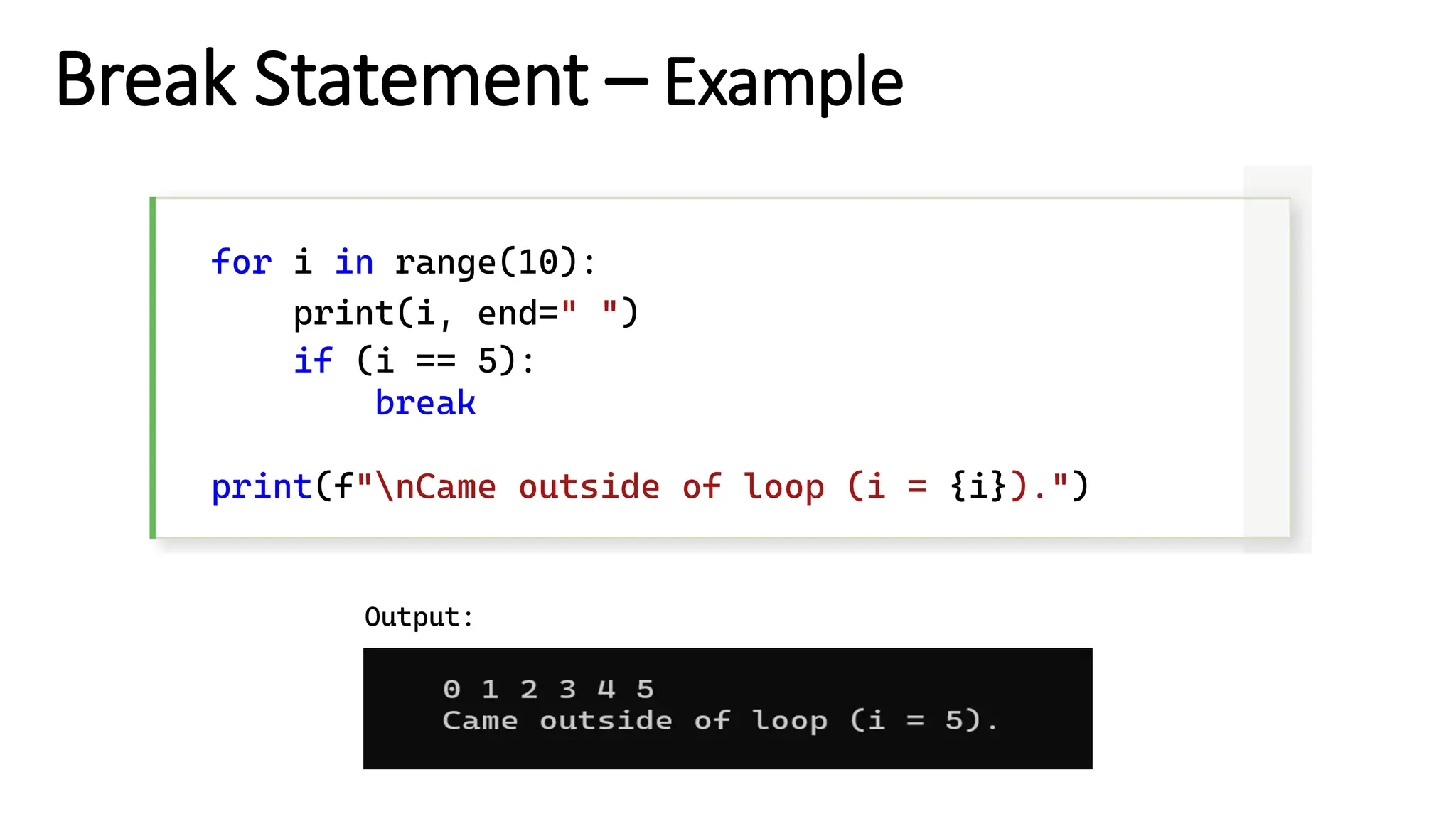
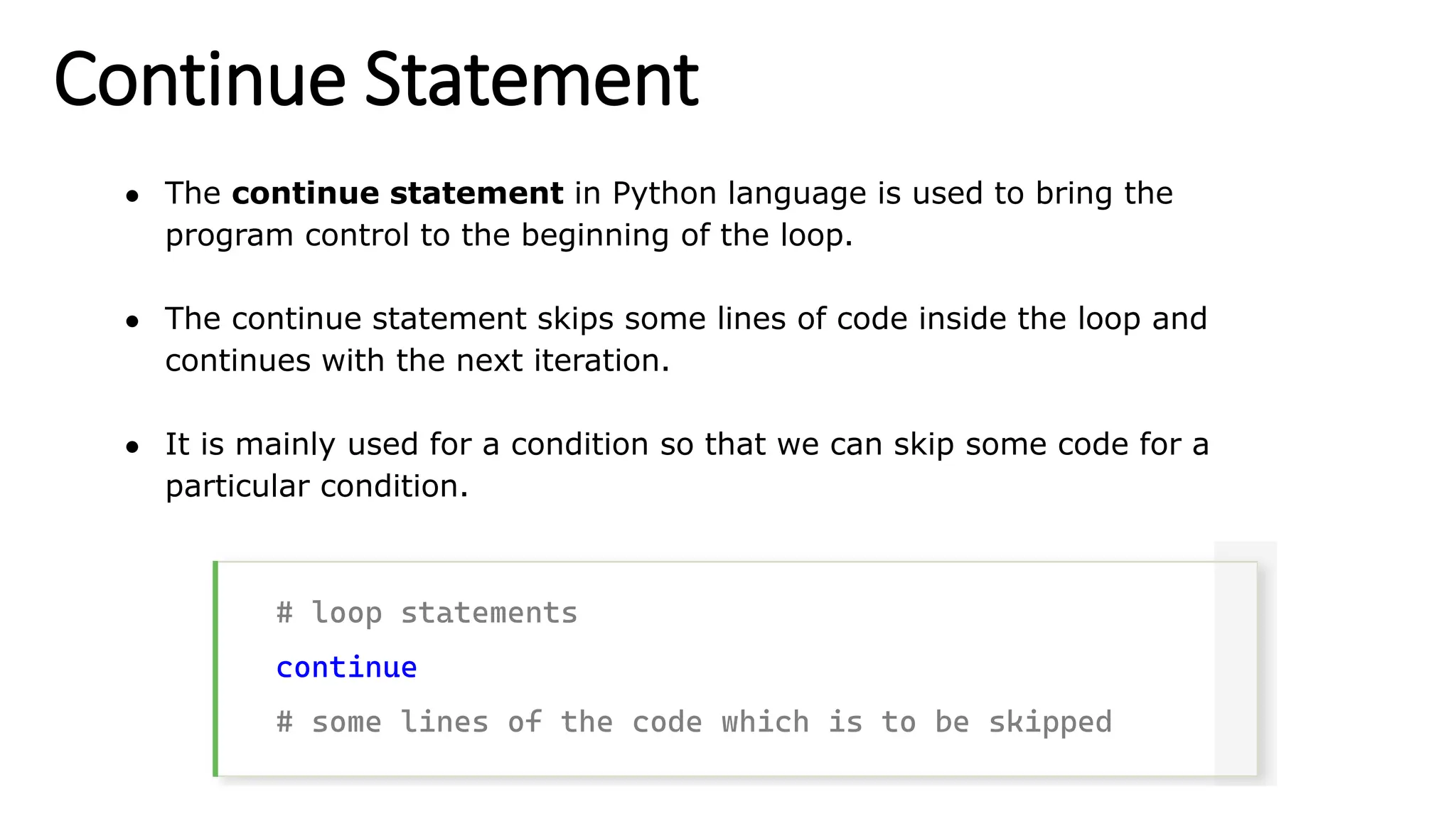
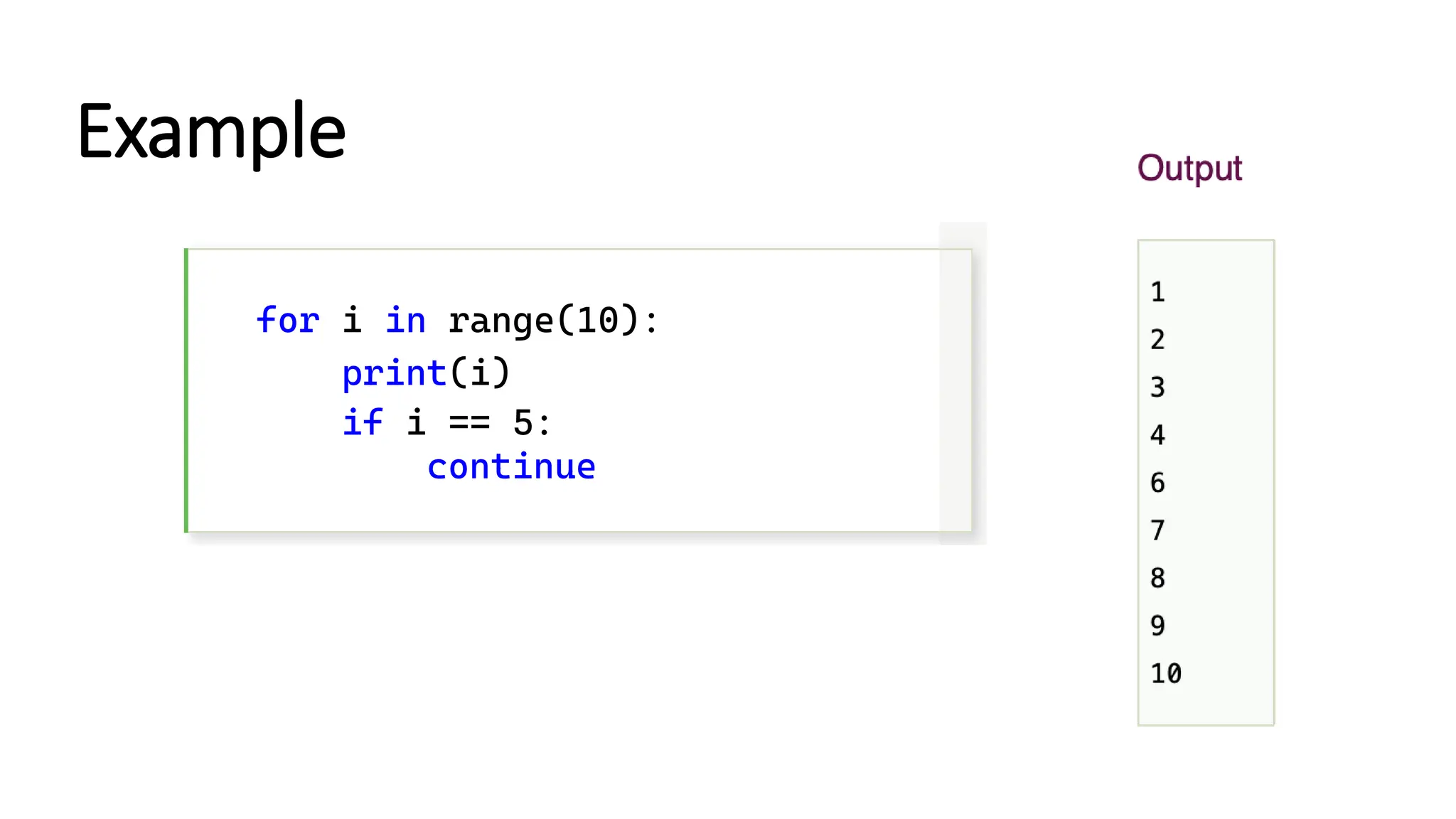
![Other Examples: >>> string = "Hello, 123 World" >>> uppercase_letters = [char.upper() for char in string if char.isalpha()] >>> print(uppercase_letters) >>> list1 = [ 1, 2, 3 ] >>> list2 = [ 4, 5, 6 ] >>> combList = [(x,y) for x in list1 for y in list2] >>> [(1, 4), (1, 5), (1, 6), (2, 4), (2, 5), (2, 6), (3, 4), (3, 5), (3, 6)] >>> list1 = [x for x in range(1,21) if x%2==0] >>> [2, 4, 6, 8, 10, 12, 14, 16, 18, 20]](https://image.slidesharecdn.com/introductiontopython-lecture2-240909223643-1a6e12b6/75/Introduction-to-Python-Prog-Lecture-2-24-2048.jpg)

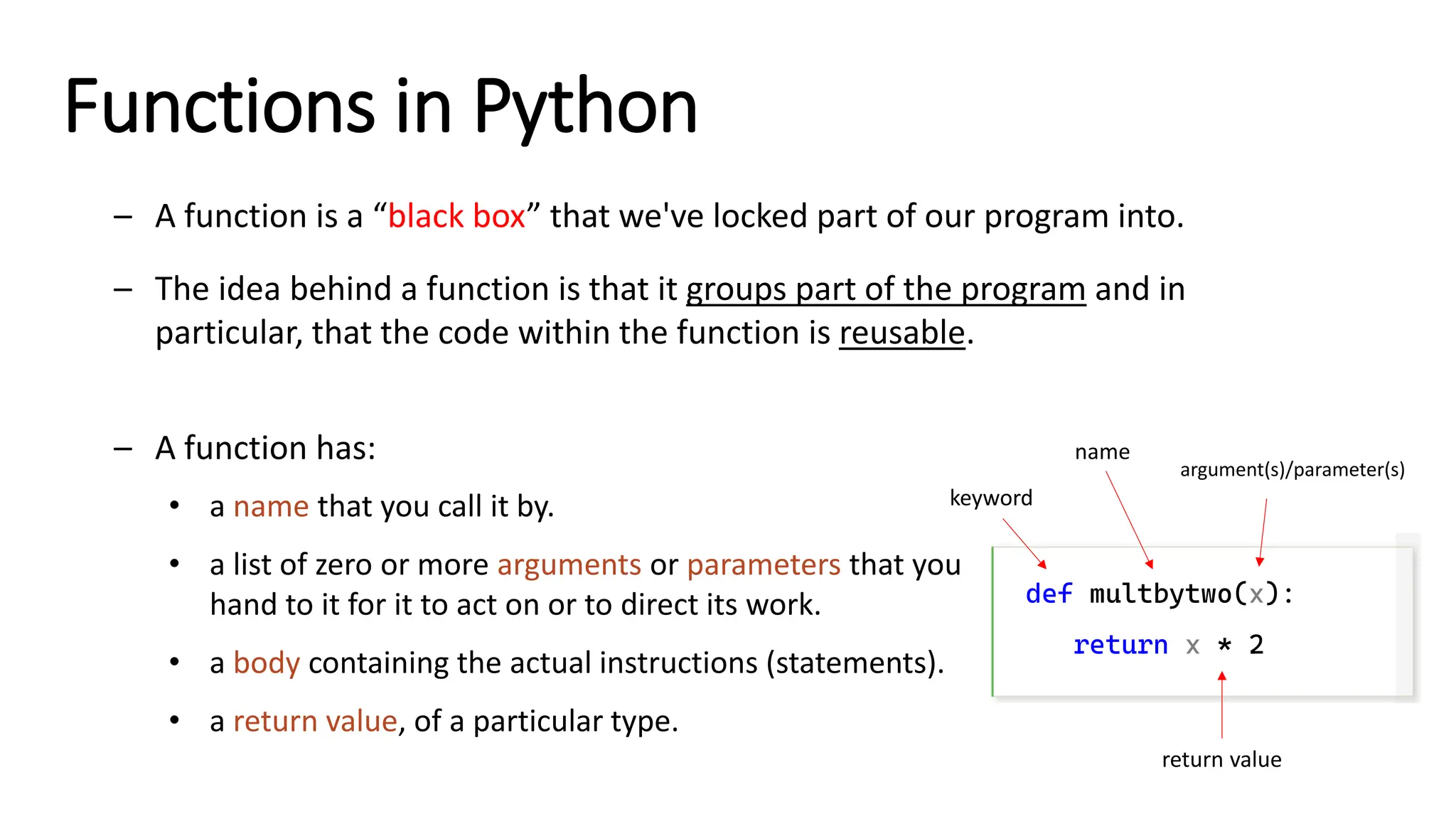
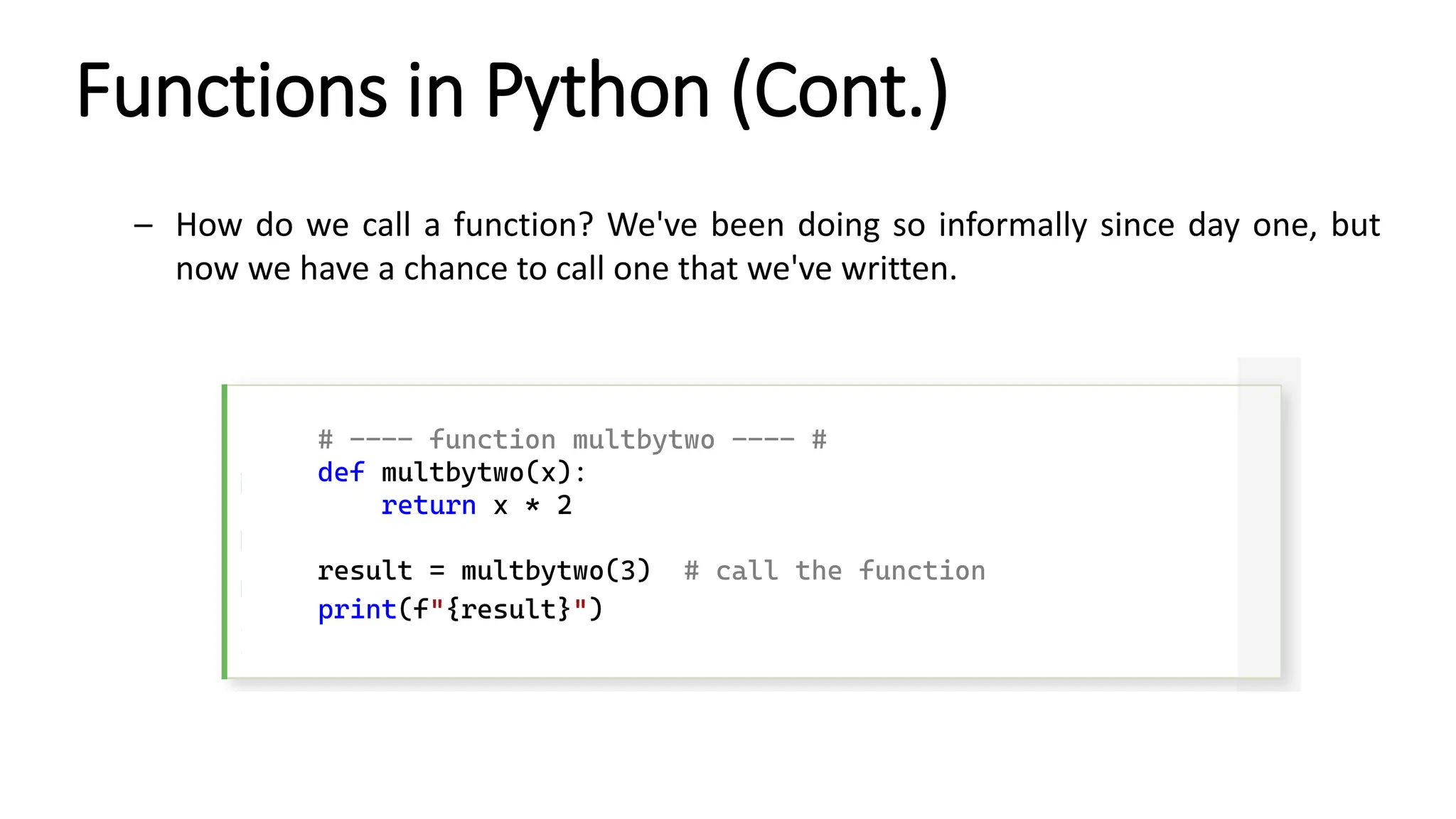
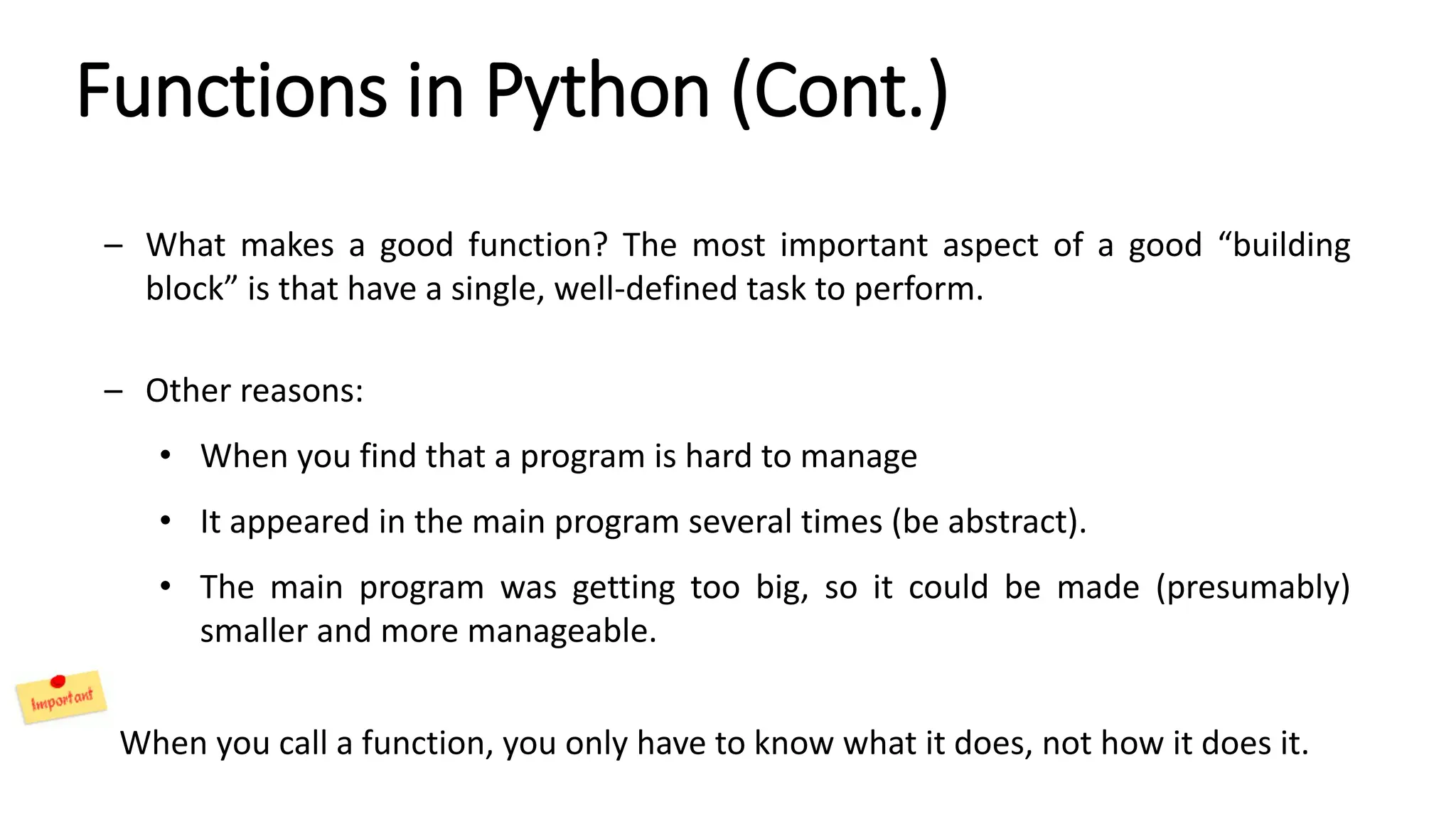

![Functions in Python (Cont.) – However, there is an exception to this rule. When the argument you pass to a function is not a single variable, but is rather an array (sequence), the function does not receive a copy of the array, and it therefore can modify the array in the caller. (reason is that it is too expensive to copy the array!) def addTwo(arr): for i in range(len(arr)): arr[i] += 2 list = [1, 2, 3, 4, 5] print(f"Before: {list}") addTwo(list) print(f"After: {list}")](https://image.slidesharecdn.com/introductiontopython-lecture2-240909223643-1a6e12b6/75/Introduction-to-Python-Prog-Lecture-2-30-2048.jpg)
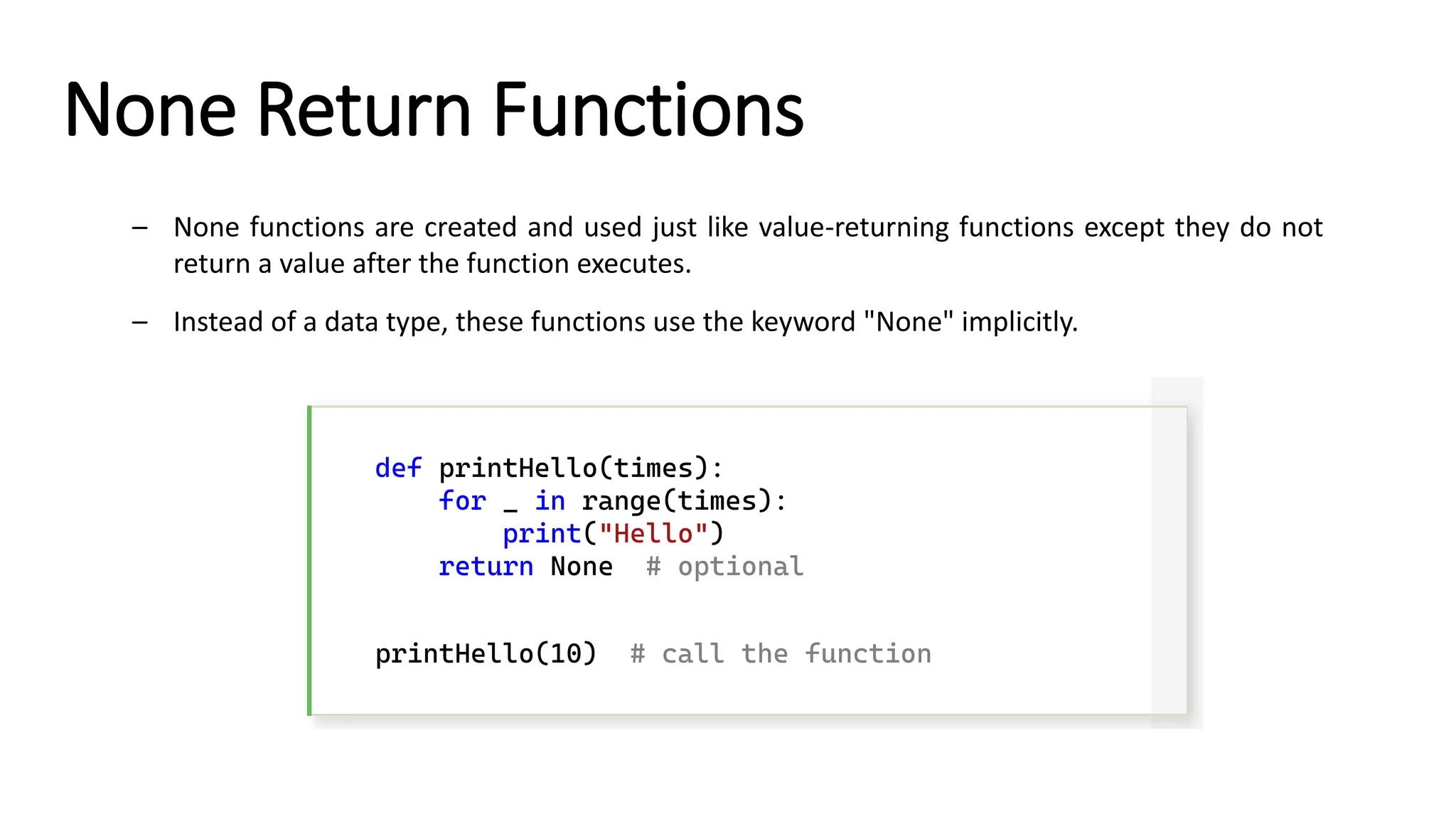

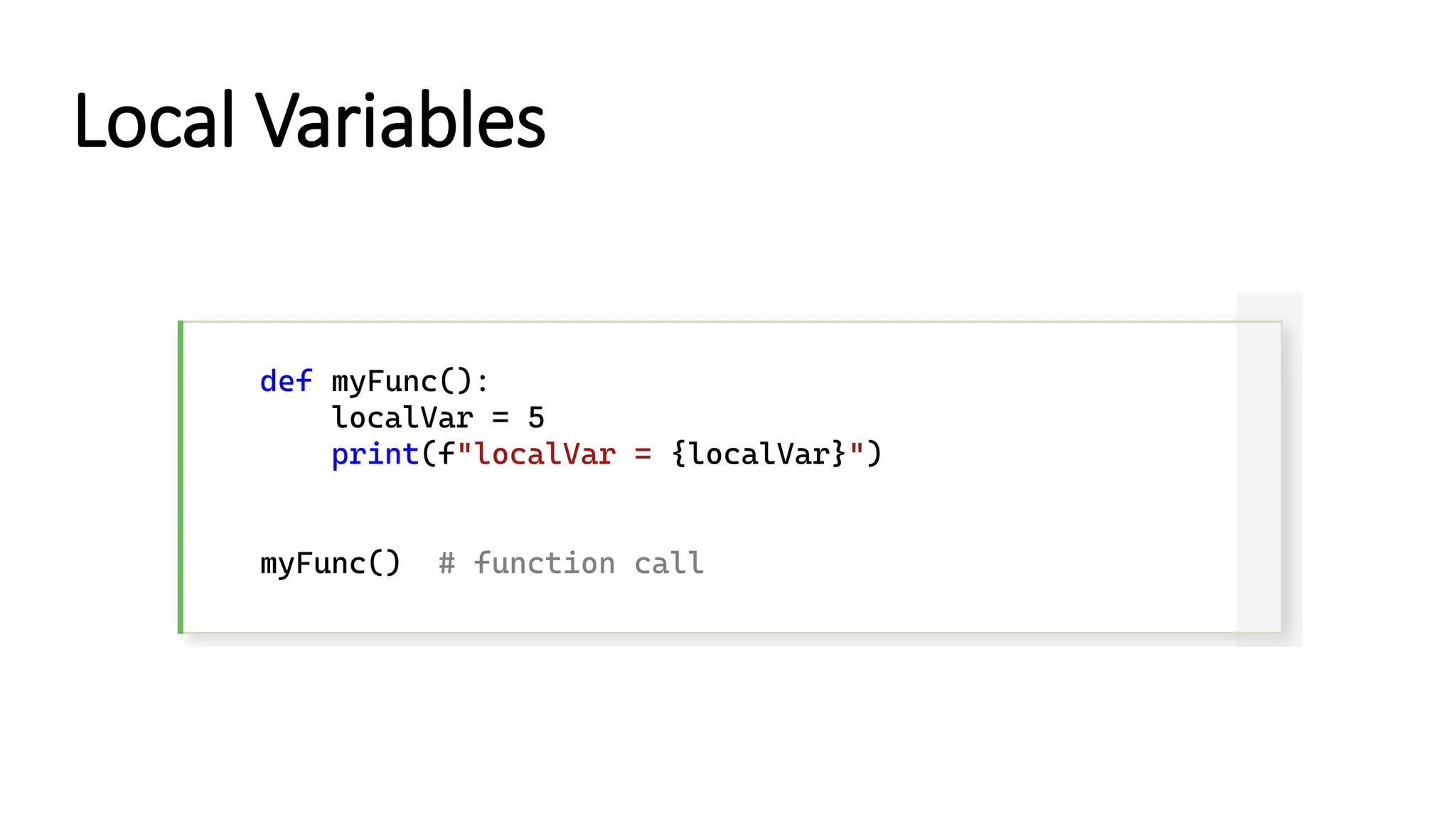
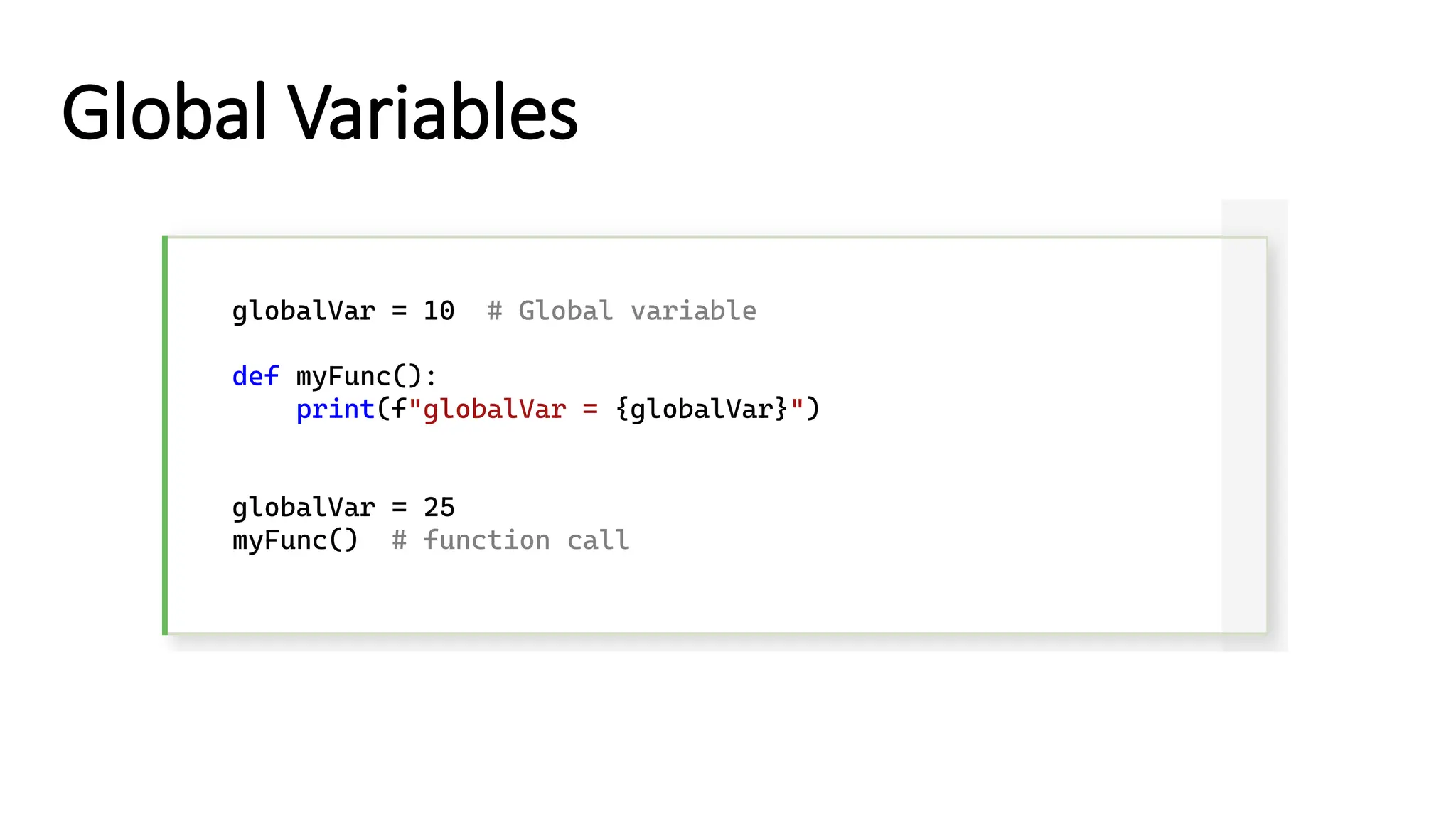
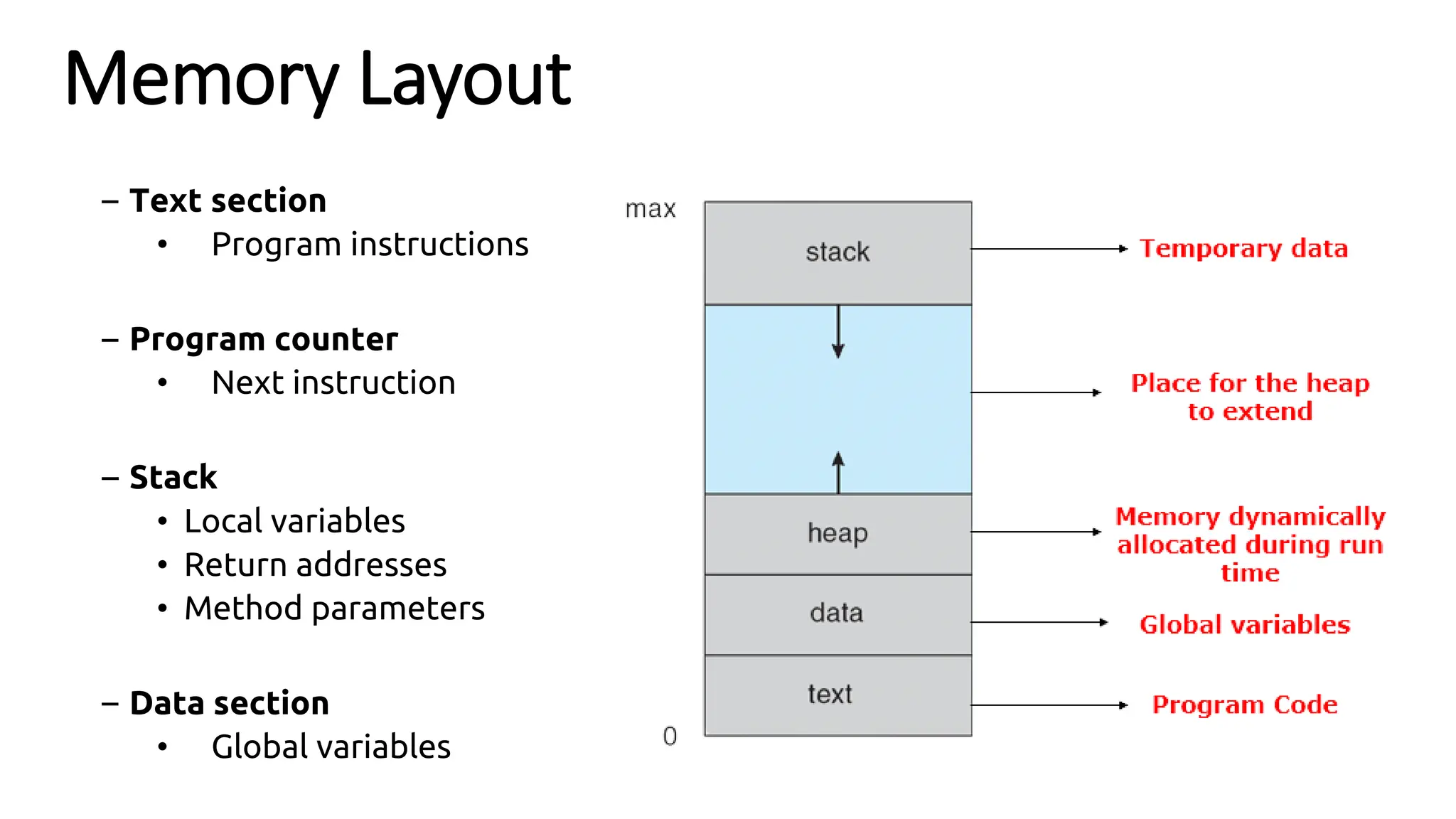

![Variable length arguments def printinfo(arg1, *vartuple): print(arg1) for var in vartuple: print(var) printinfo(1, "Python", 24, 5, ['A', 'B', 'C'], 100)](https://image.slidesharecdn.com/introductiontopython-lecture2-240909223643-1a6e12b6/75/Introduction-to-Python-Prog-Lecture-2-37-2048.jpg)
